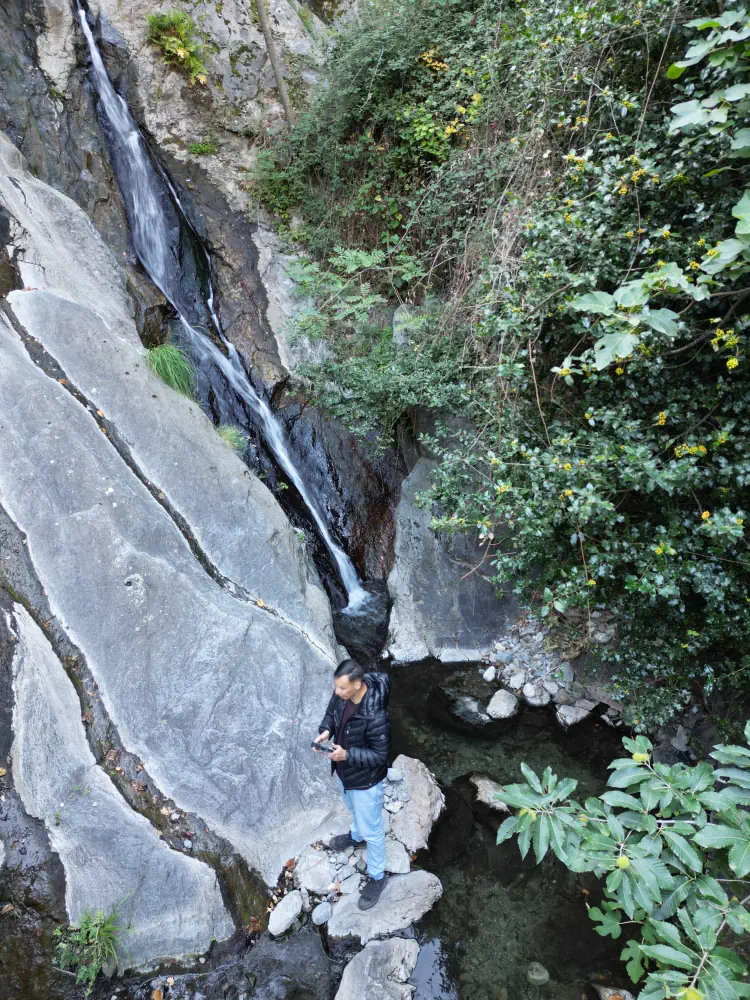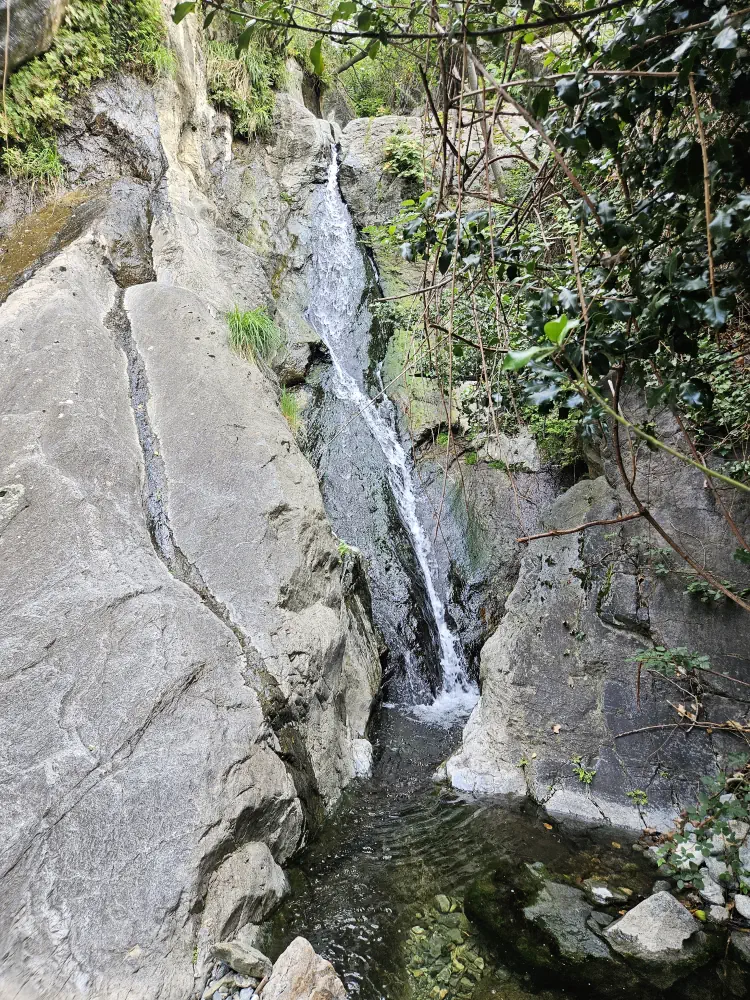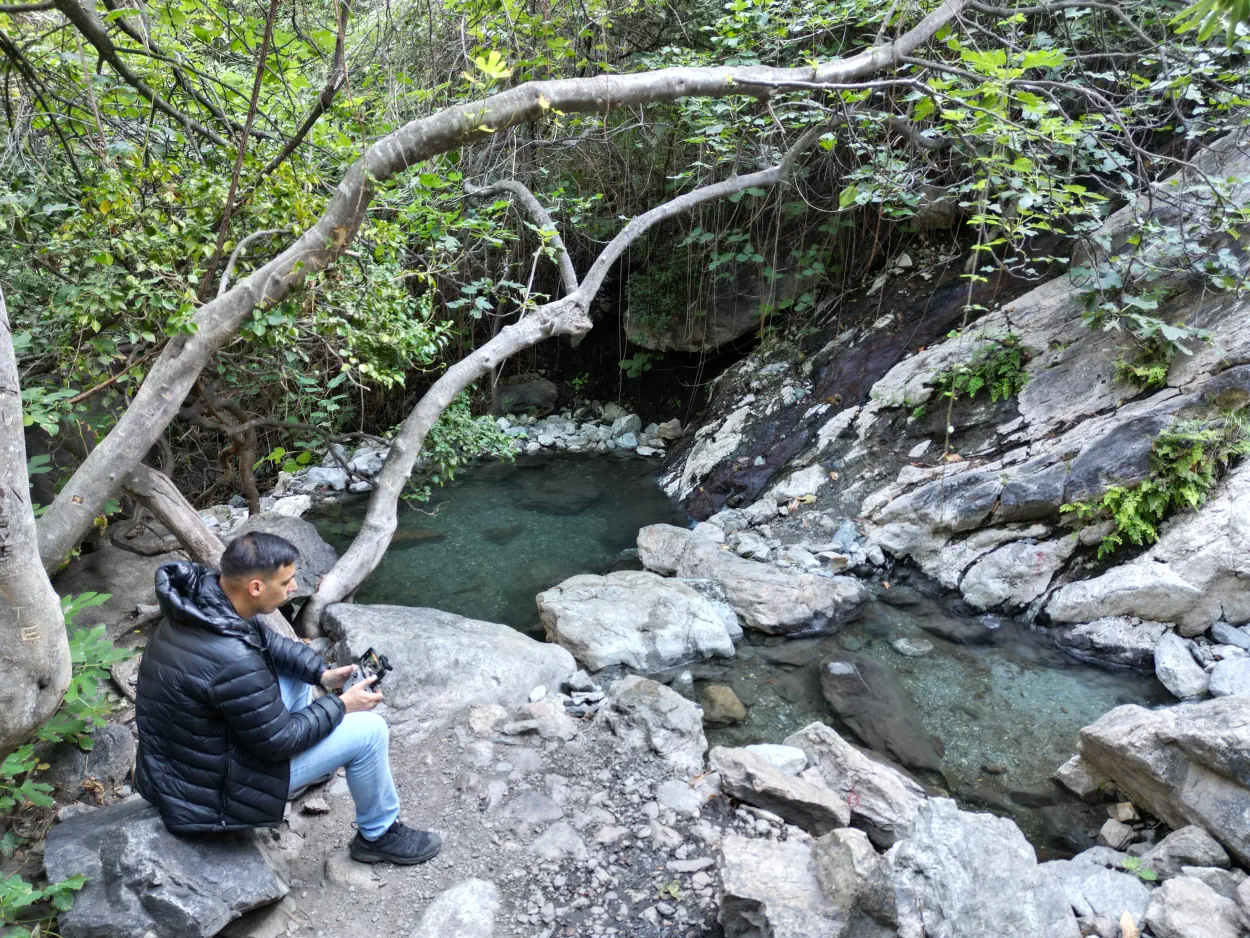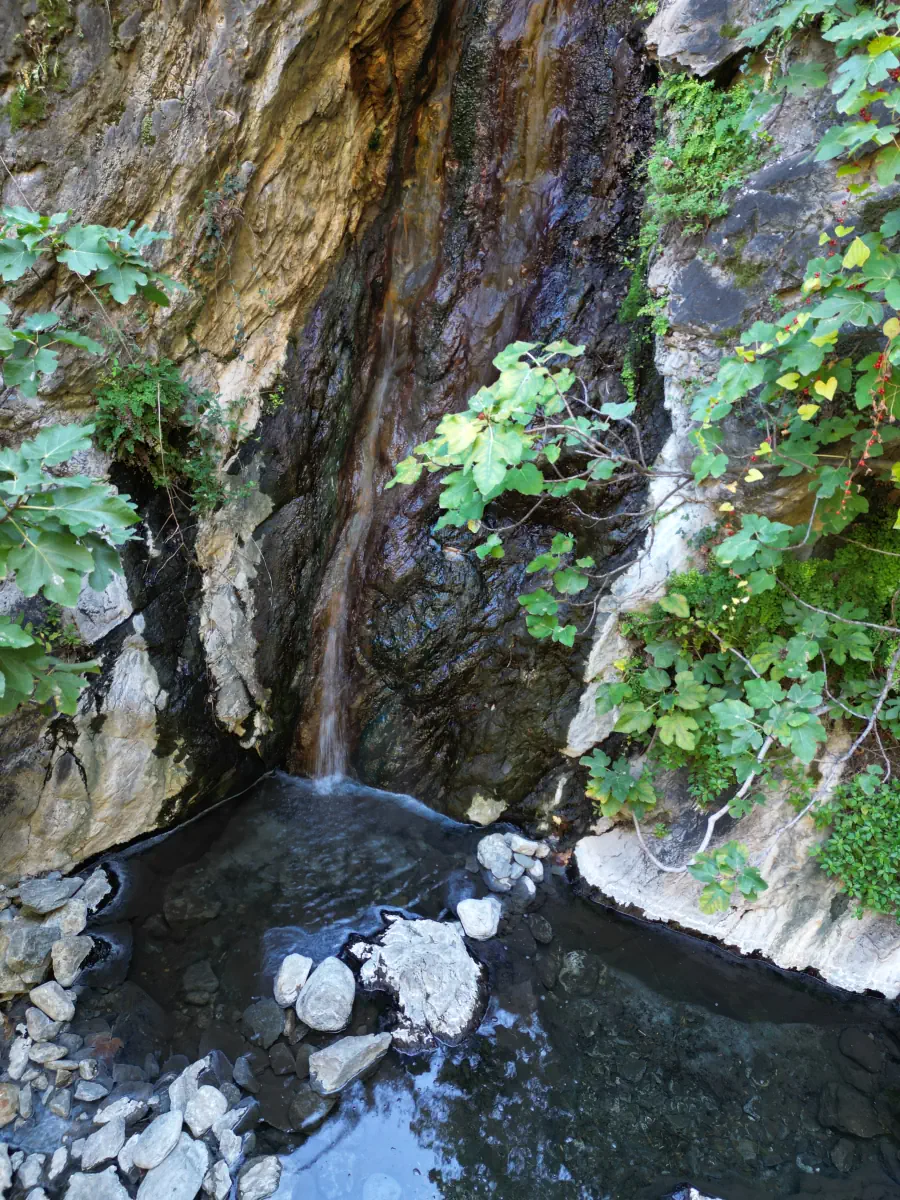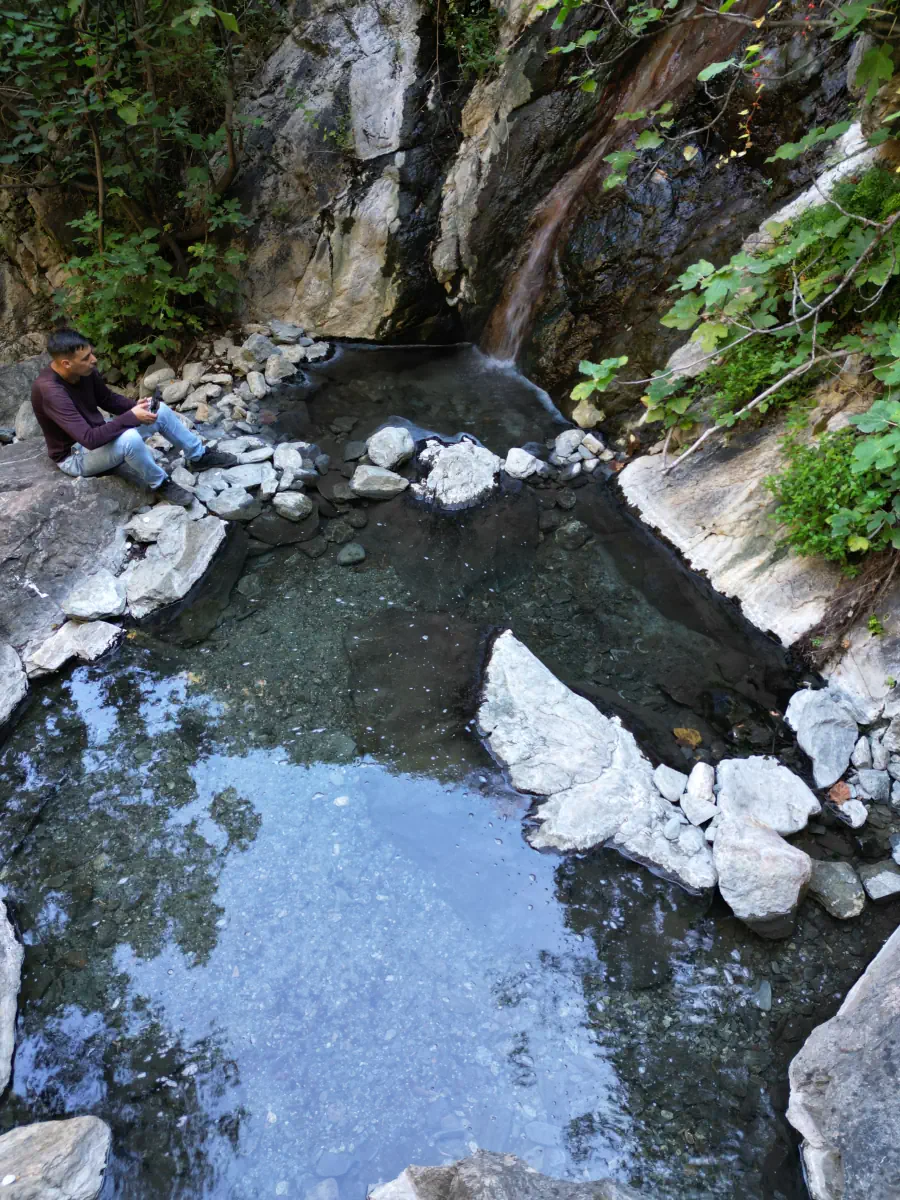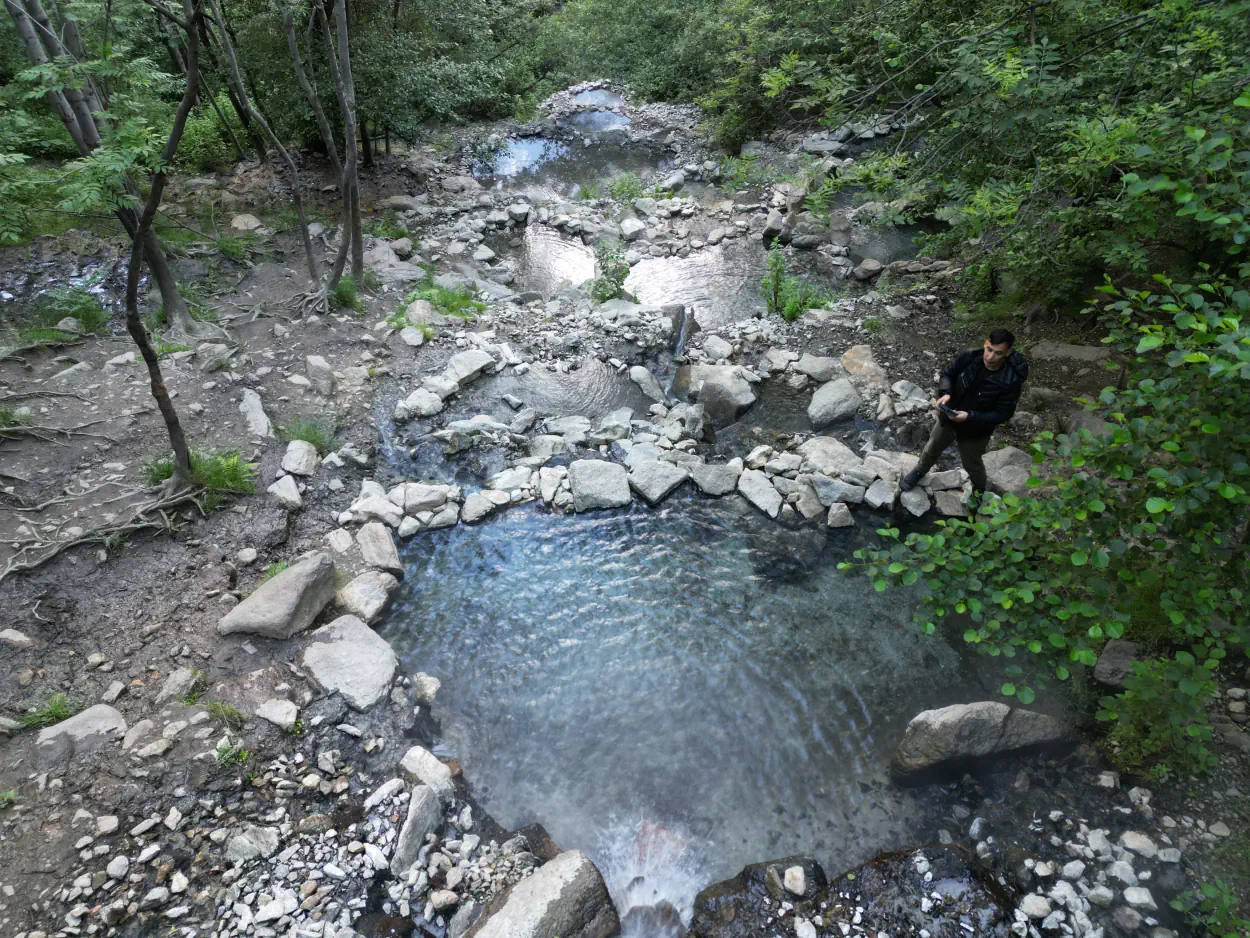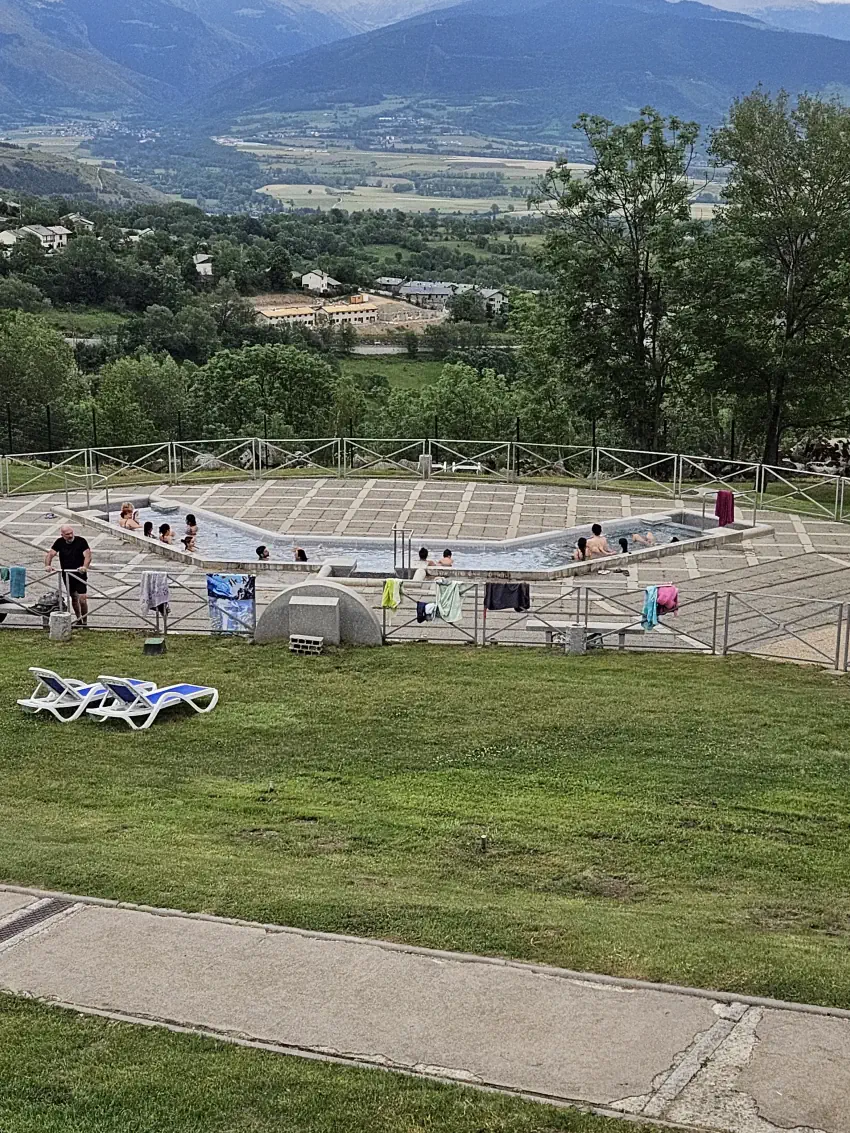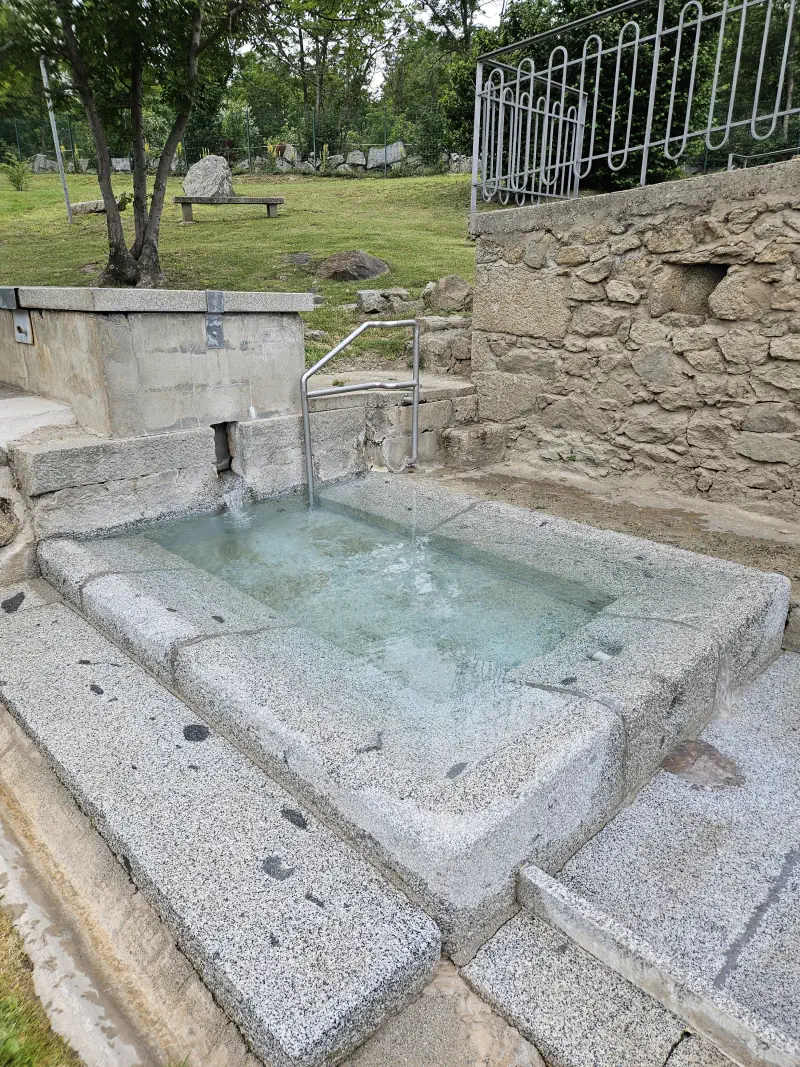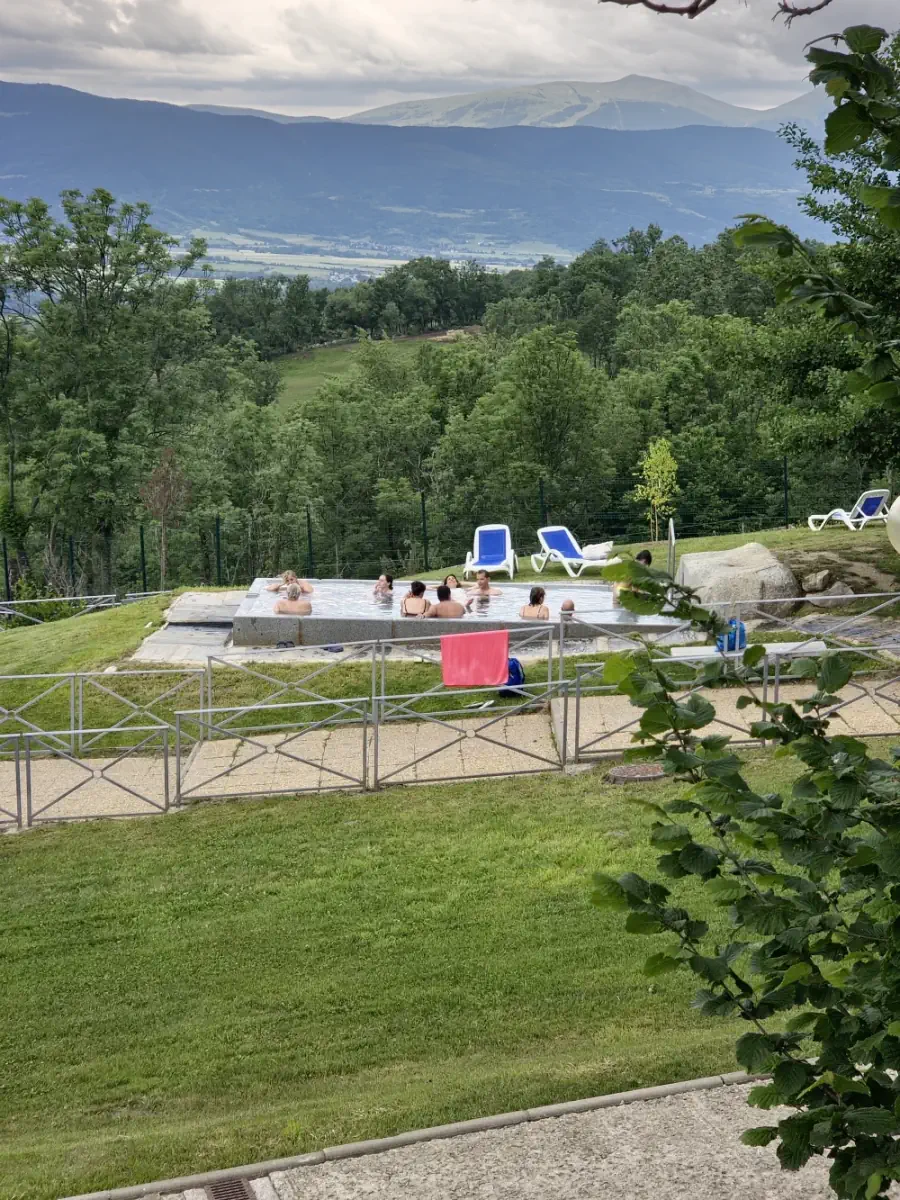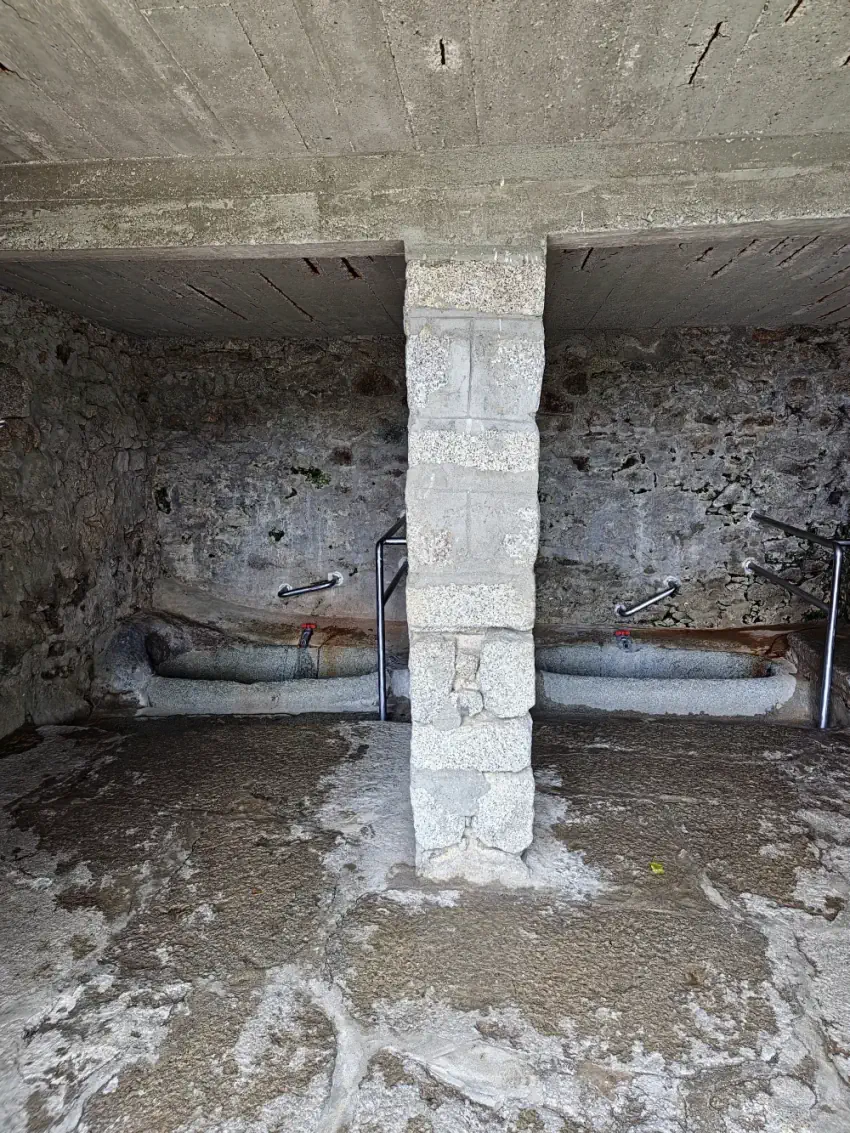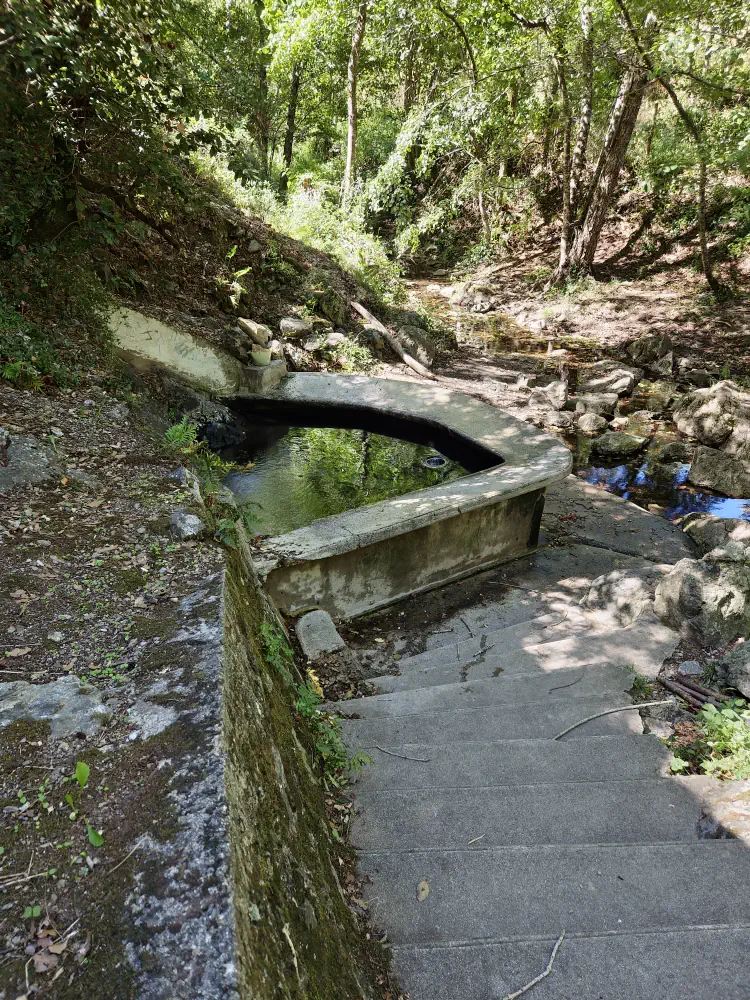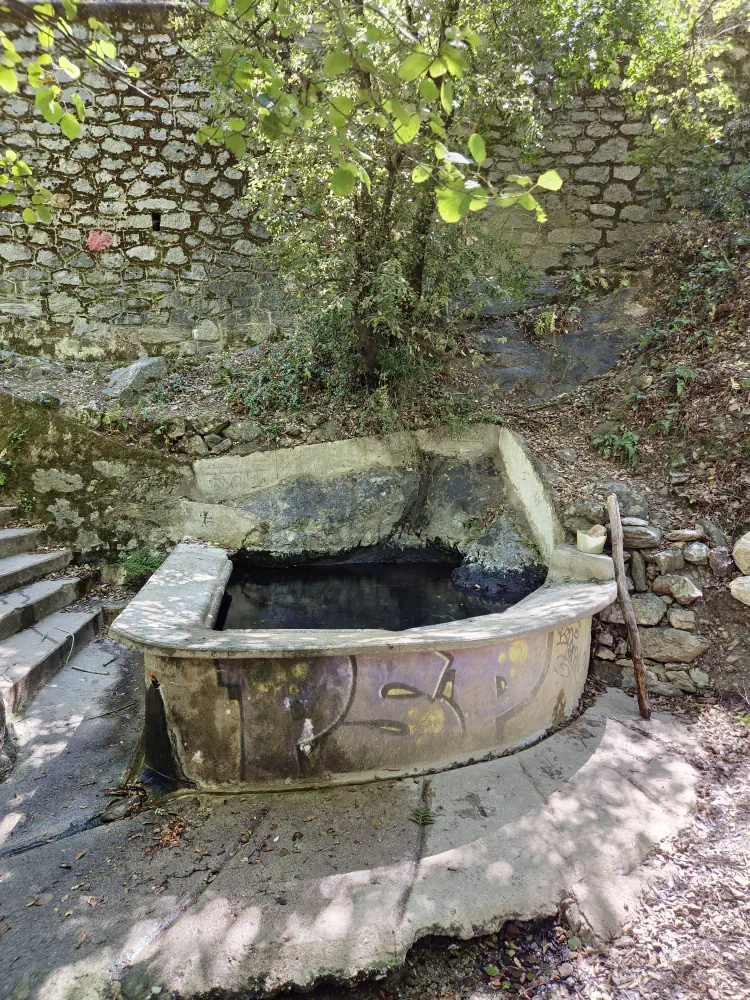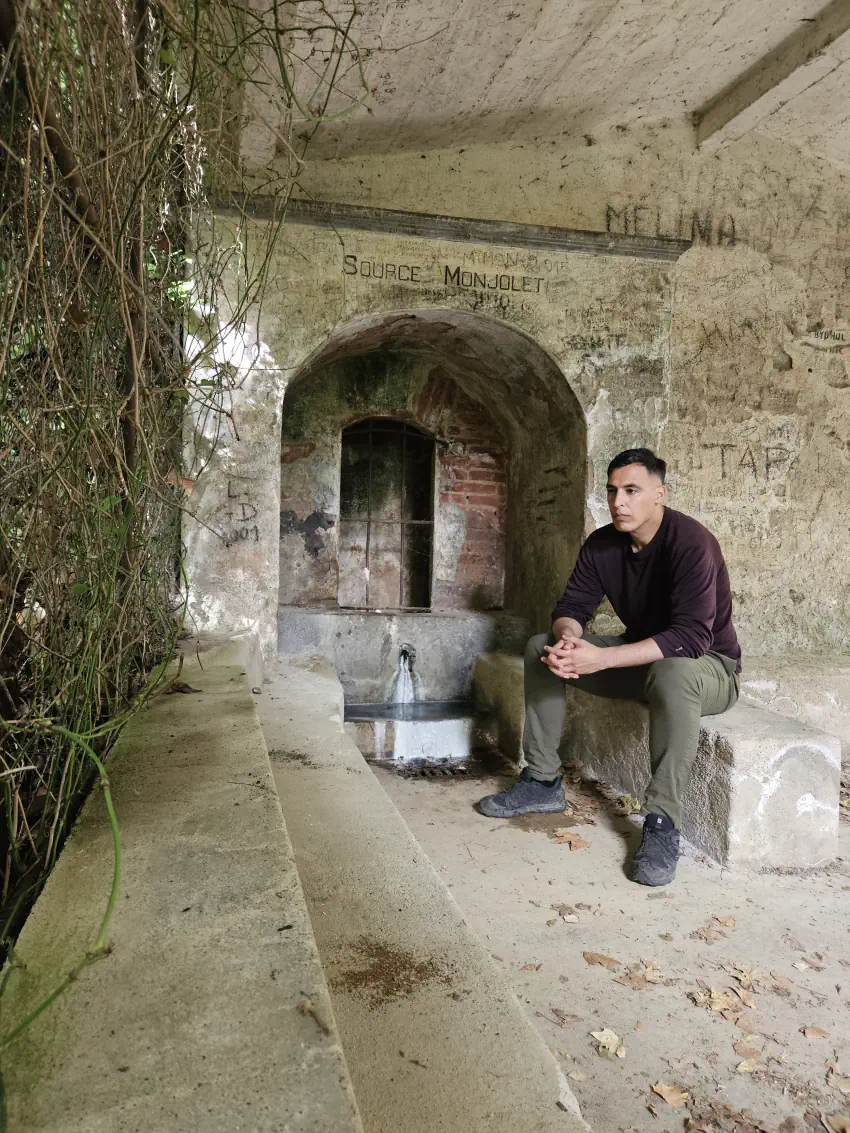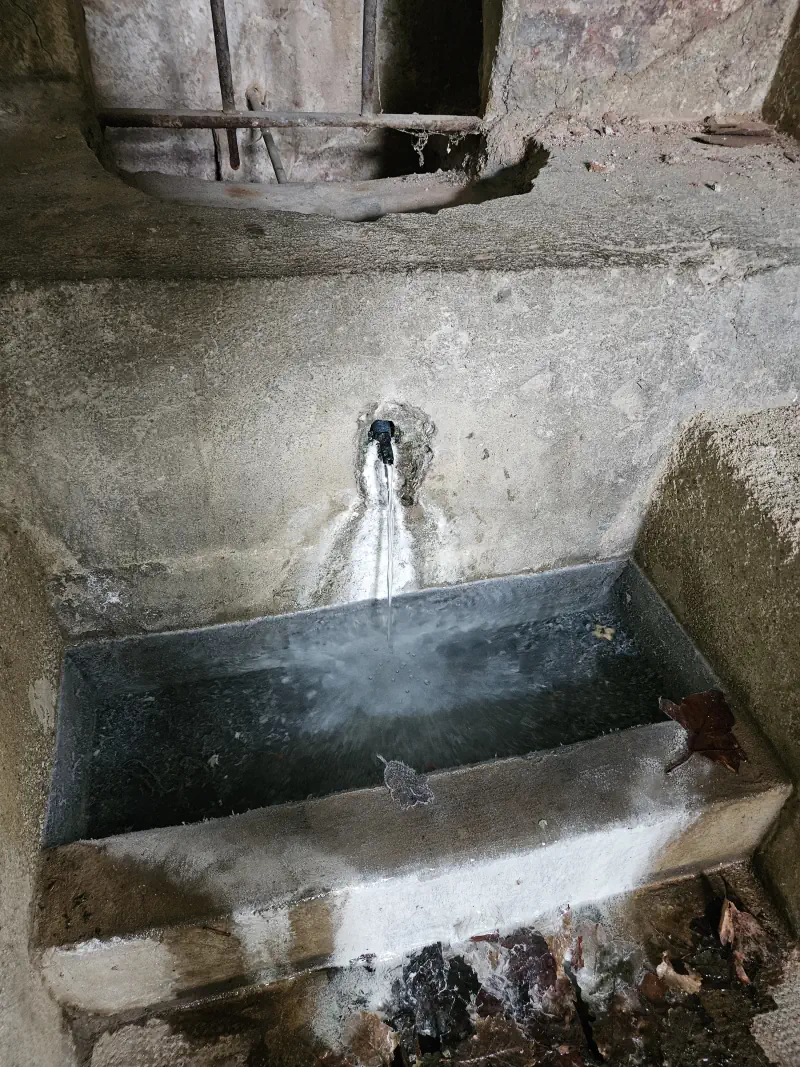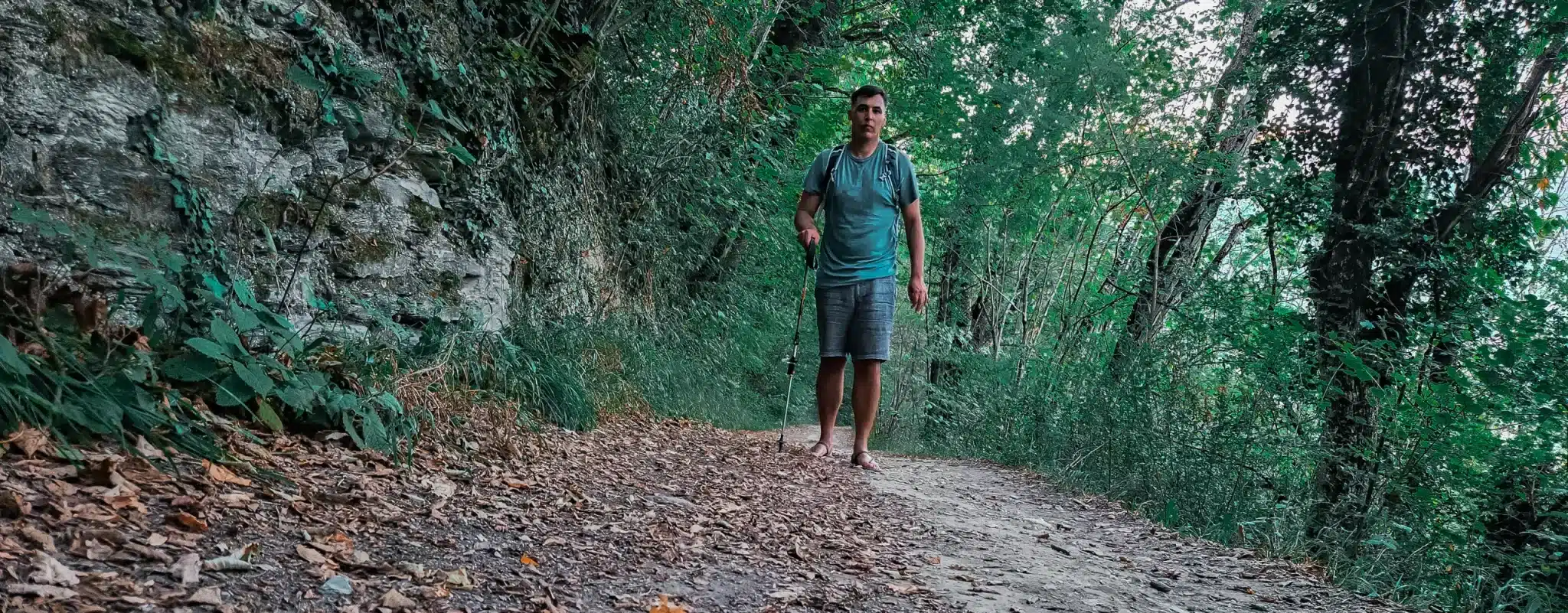Hot Springs and Natural Baths in the Pyrénées-Orientales
- Nature Source Chaude
- Published on
- Updated on 19 June 2025
The Pyrenees are rich in hot springs, especially in the Pyrénées-Orientales.
They are found mainly along the valleys of the Têt and Tech rivers. Most of these springs are tapped. However, there are still a few wild spots where hot water continues to gush from the lips of the nourishing earth, much to the delight of travellers. You can even soak for free.
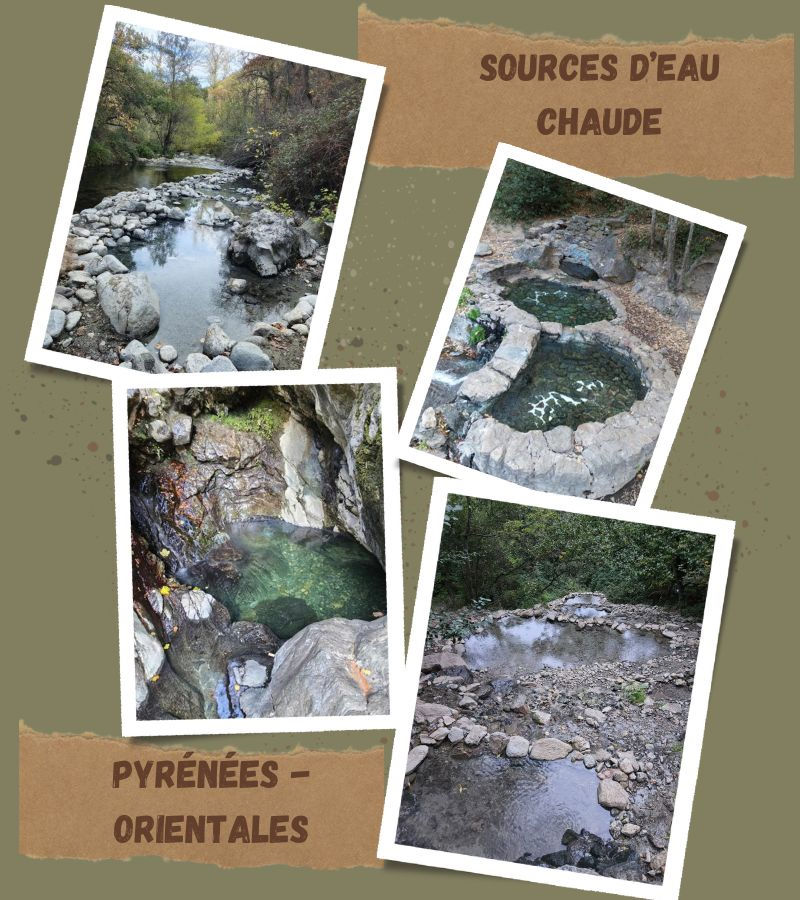
Table of Contents
A little bit of the history
The Pyrenees-Orientales have always been rich in sulphurous springs. Between 1800 and 1850, however, they were exploited on a small scale.
At that time, the communes of the department were not very active in the construction of thermal baths. This was not the case in the neighbouring departments of Hautes-Pyrénées and Basses-Pyrénées, where many spa stations were booming. The central and local authorities were always ready to help the communes with their projects by involving spa architects.
In the Pyrénées-Orientales, on the other hand, the exploitation of springs was left entirely to private initiative. In the early days, the buildings were modest and often lacked character. It was not uncommon for baths to be confined to private houses. However, the success of this type of holiday was still too small to attract investors, which had an impact on the number of visitors to the springs.
That’s why every summer thousands of travellers from all walks of life preferred to flock to the Hautes-Pyrénées and the Basses-Pyrénées, where the architecture of the large resorts such as Luchon, Cauterets and Saint-Sauveur was almost a game. The development of these resorts has largely contributed to their fame.
But it was not until the 1850s, when the private sector began to dominate, that spa resorts really took off.
However, what distinguishes the Pyrénées-Orientales from other departments is the presence of entrenched valleys (the Têt, the Tech, etc.). Countless spa resorts have developed along these narrow gorges, using the same organisational model.
In the few buildings in the resort, the baths were located in the basement or on the ground floor, while the accommodation was upstairs. This was the case at Molitg, Olette, Graus d’Olette, Thuès, Canaveilles, etc. This explains the character of the department’s narrow, high-rise buildings.
Today, the Pyrénées-Orientales boasts a rich thermal life specific to this department, but there are still hot springs that, as far as I know, have never been exploited.
You can enjoy the benefits of hot, sulphurous water in uncovered baths, free of charge. What’s more, these baths are far from any form of pollution, whether from urban development, agriculture or sewage management.
Map of hot springs in the Pyrénées-Orientales
On this map, you will find the thermal baths located in the Pyrénées-Orientales.
These thermal baths benefit thermal water and can welcome visitors in the following ways:
- Free spas, with or without facilities.
- Paid spas. Some of these spas have very simple (and therefore more natural) facilities and are still very affordable.
Hot water fountains and washhouses are also represented.
Hot springs are located in wilderness areas that may be unsafe due to poor access, especially in the Pyrénées-Orientales. Caution is advised. Access to the sites is at your own risk.
1. The three hot water pools - Thuès-entre-Valls
After a short stop in Font-Romeu, I took the bus to Prats-Balaguer and then walked the last few kilometres to Thuès-Entre-Valls. I avoided the road by taking the ‘balconies’ of the Têt, which is safer but requires a lot more effort.
After a tough descent to Thuès-entre-Valls, I had to cross the ‘little yellow train‘ railway line to reach the path leading to the three hot water pools.
For those arriving by car, the village has a paid car park and a free car park (about twenty spaces). This is where the path to the springs begins. A level crossing allows pedestrians to cross the railway line in complete safety, as the third rail is electrified.
Half an hour’s walk along the Las Ayguès Calentes path (which runs alongside the power line on the IGN maps) will take you to the three pools, also known as the Trois Bassins de Thuès. The exact route can be found on the Internet.
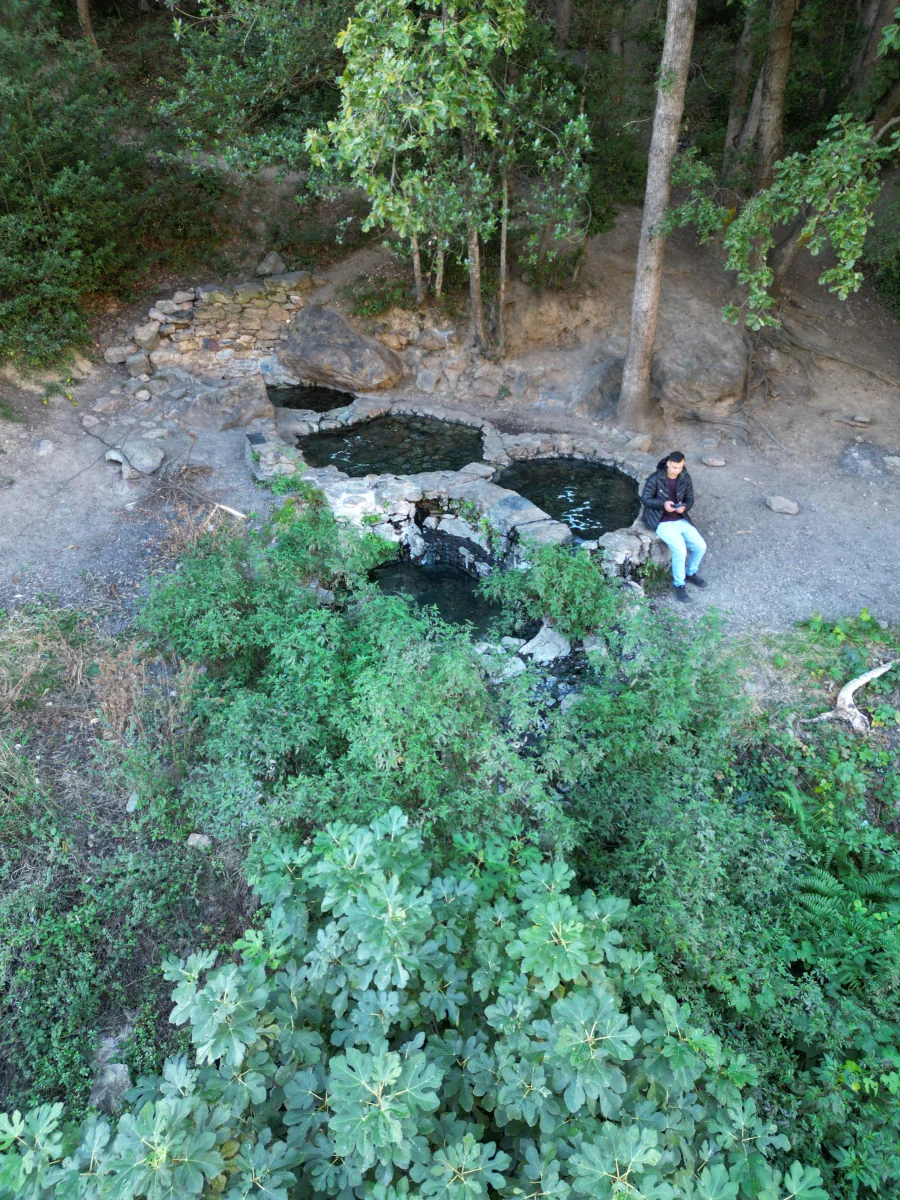
I then discovered that the development of these three hot water pools had been very well thought out. The first thing I noticed was the stone wall that completely surrounds the pools.
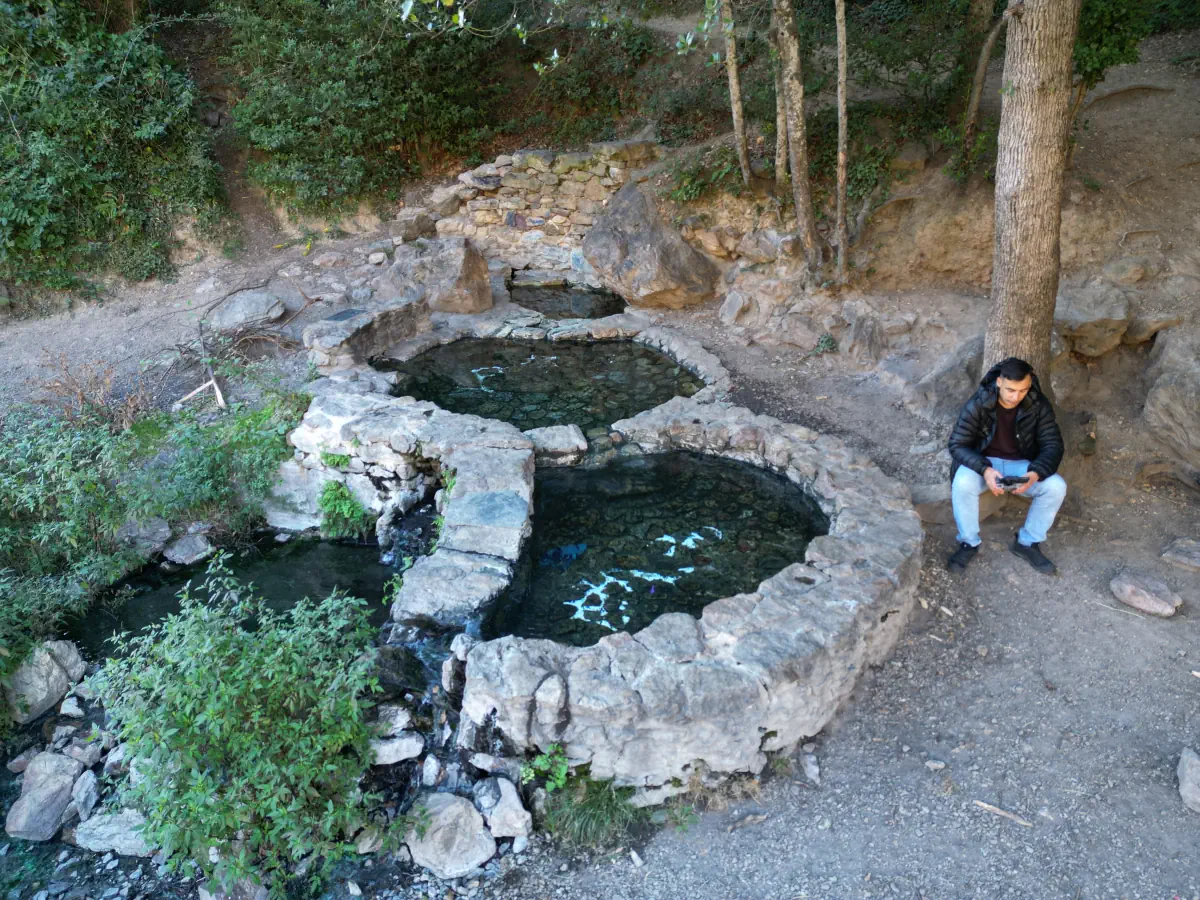
Then, hypnotised for a brief moment, I looked at the water that reflected the different colours coming from the bottom of the pool, giving the illusion of an exceptional tiling.
These are actually micro-organisms (cyanobacteria) that have grown on paving stones carefully placed at the bottom of the pools. The bottom is therefore not entirely natural, but it is very aesthetic. Each pool functions like a large bathtub, with the water constantly being renewed.
This type of bath is not entirely natural, as the bather is not in direct contact with the ground. These waters therefore have different properties to those found in their natural environment. To find out more about this, read the article ‘The soil, base layer and living medium of a hot spring’.
The temperature of the last pool is particularly pleasant at almost 40 degrees. It is shallow and can accommodate up to six people. The second pool has a temperature of 42 degrees, while the first, the smallest, is much warmer.
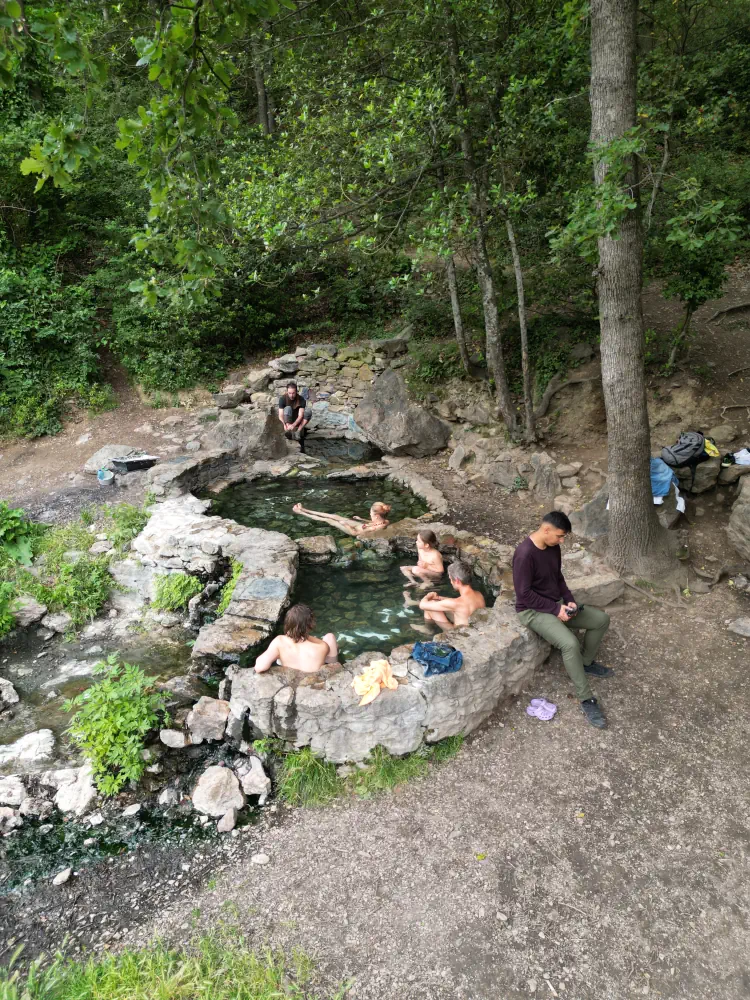
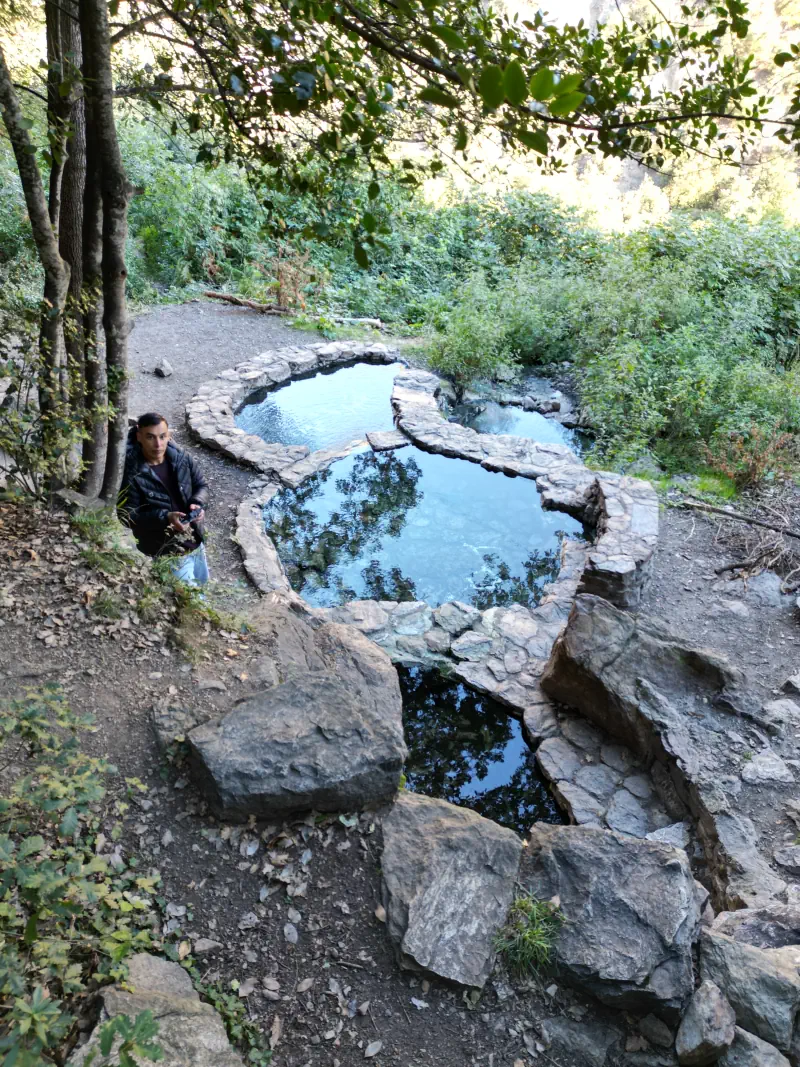
2. The hot waters canyon - Thuès-les-Bains
You will discover two distinct sites in the canyon: the waterfall and the ‘marmite’.
The canyon waterfall
To reach the waterfall, I continued along the Las Ayguès Calentes path. I kept to the left of the path as much as possible to reach a stone bridge at railway level.
At this point, boulders have been placed on the Torent de la Fajet (Fajet stream) to make it easier to cross. A path on the right leads to the nearby waterfall.
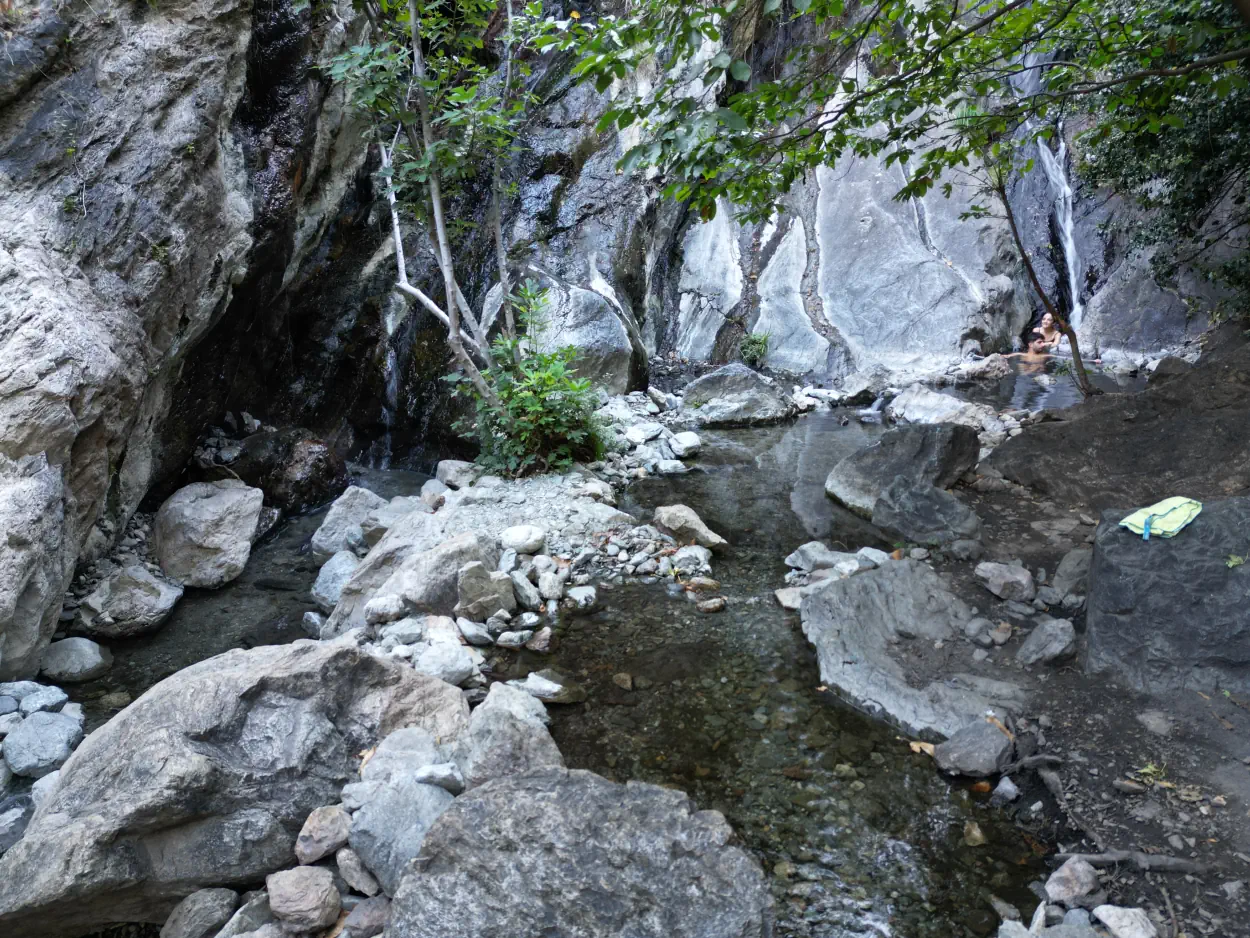
There are several hot water pools scattered around the site, fed by the large waterfall and other hot water resurgences. Despite being mixed with cold water, the water temperature can reach 44-46°C in places.
The ‘Marmite’ of the canyon
To get to the Marmite site, you have to enter the grounds of the former Thuès thermal baths, now converted into a medico-social establishment. Please note that this area is strictly off-limits to cars (but not to pedestrians).
You can also reach the grounds by taking the alternative route along the path on the left bank of the Têt, from the Thuès-Entre-Valls car park. Alternatively, you can take the bus (regional line Lio 560) in front of the post office of Thuès-Entre-Valls. The bus will drop you off at the ‘Nyer-Thermes’ stop, just in front of the enclosure, for 1 euro. Please note that there is no return service.
You will then need to leave the enclosure to reach the Little Yellow Train station. You will come to a level crossing with a gate that will allow you to safely cross the tracks (the third rail is electrified). Once through the gate, turn right along the well-trodden path leading to the canyon of hot water. It takes about ten minutes to get there. You’ll see hot water catchments and a pipe along the way.
To reach the canyon, you have to unclimb a steep rock face where a tree has taken root, almost at the end of the path. A hot spring does not choose where it gushes out because of a favourable geographical location: it gushes out wherever it chooses. This is exactly the case here, especially when it comes to a hot springs canyon, the only one of its kind in Europe.
Once inside the canyon, my attention was caught by the first waterfall of hot, even scalding water (the temperature is close to 70 degrees) flowing into a small pool.
A few metres away, a second underground hot spring feeds a pool in a rock shelter. This is known as ‘Marmite’.
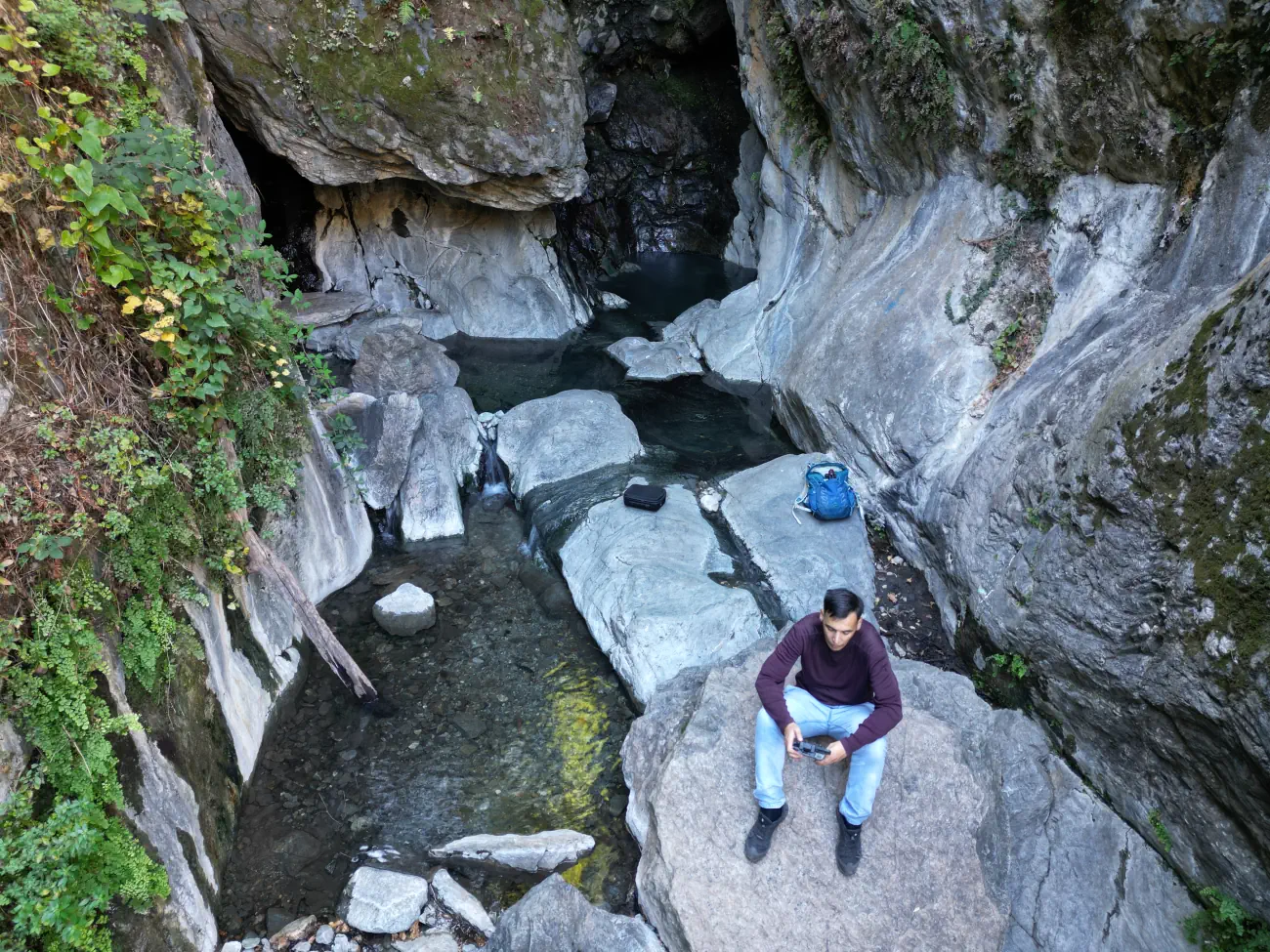
The second pool is fed by the Marmite and a waterfall of warm (almost cold) water. This creates a much cooler pool right next to the Marmite. The temperature drops from 42 degrees (Marmite) to 30-35 degrees (second pool).
Several springs feed the canyon (there are thought to be around fifteen), and the water temperature can vary from 25 to 35 degrees along the way.
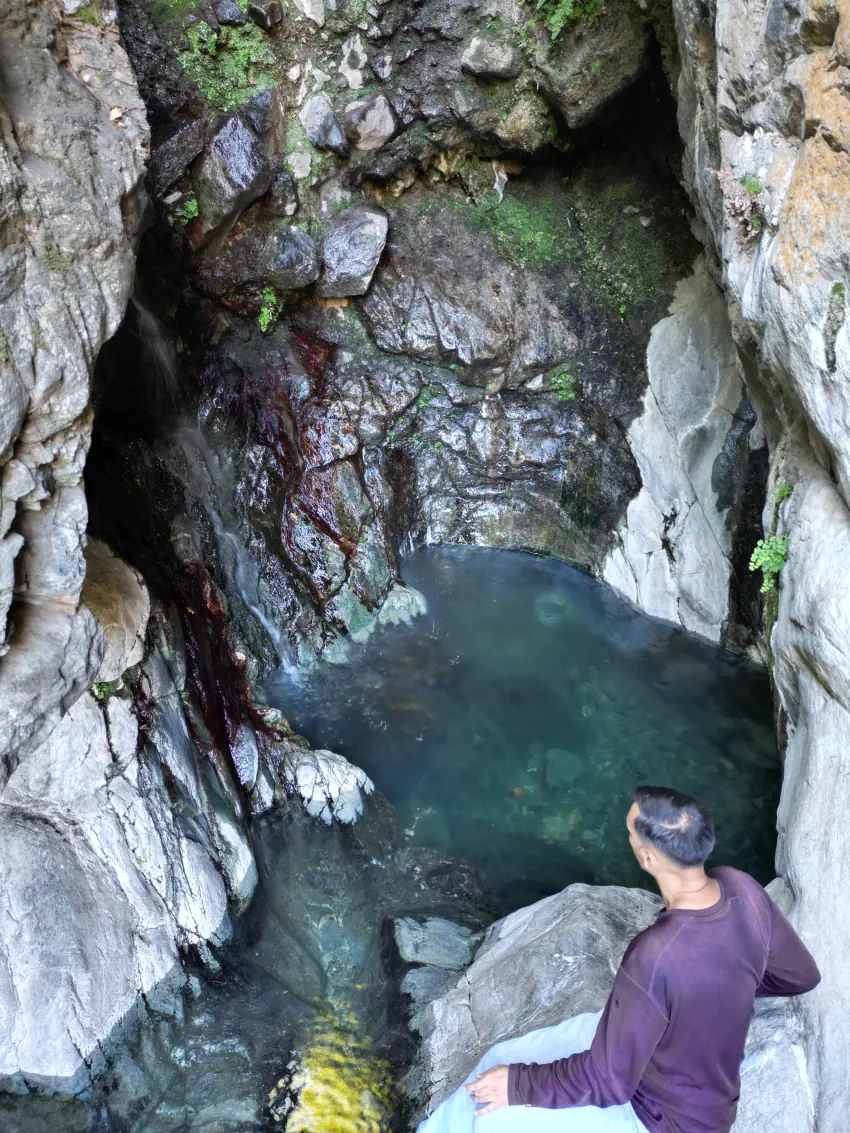
The Marmite, which is quite deep, is fed by a resurgence of hot underground water and a waterfall of cold water.
The thermal water is therefore diluted. However, without the addition of cold water, it would be impossible to soak in it, as the temperature of the pool is already at or above 42°C.
On the way home, I once again came across the grounds of the former spa centre of Thuès-les-Bains.
I passed the first sulphurous hot water fountain (called the Source Saint-Louis) and then a second, unnamed fountain along the road. These fountains were undoubtedly used in the past for drinking cures. After taking a sip (I should point out that it was scalding hot), I preferred not to drink any more, as it is difficult to know where the water comes from.
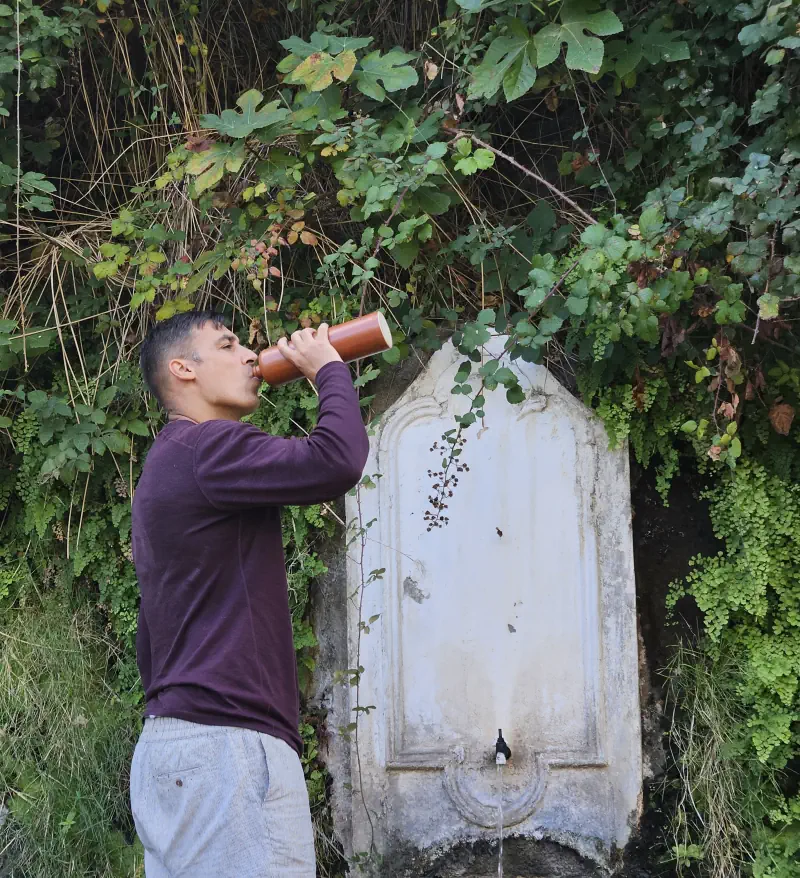
Outside the enclosure, there is only one footpath to go elsewhere. This leads back to Thuès-entre-Valls along the left bank of the Têt.
I took the opportunity to have a look at this imposing white building before I left. It once housed the old thermal baths, as well as the hotels that provided accommodation for those taking the waters.
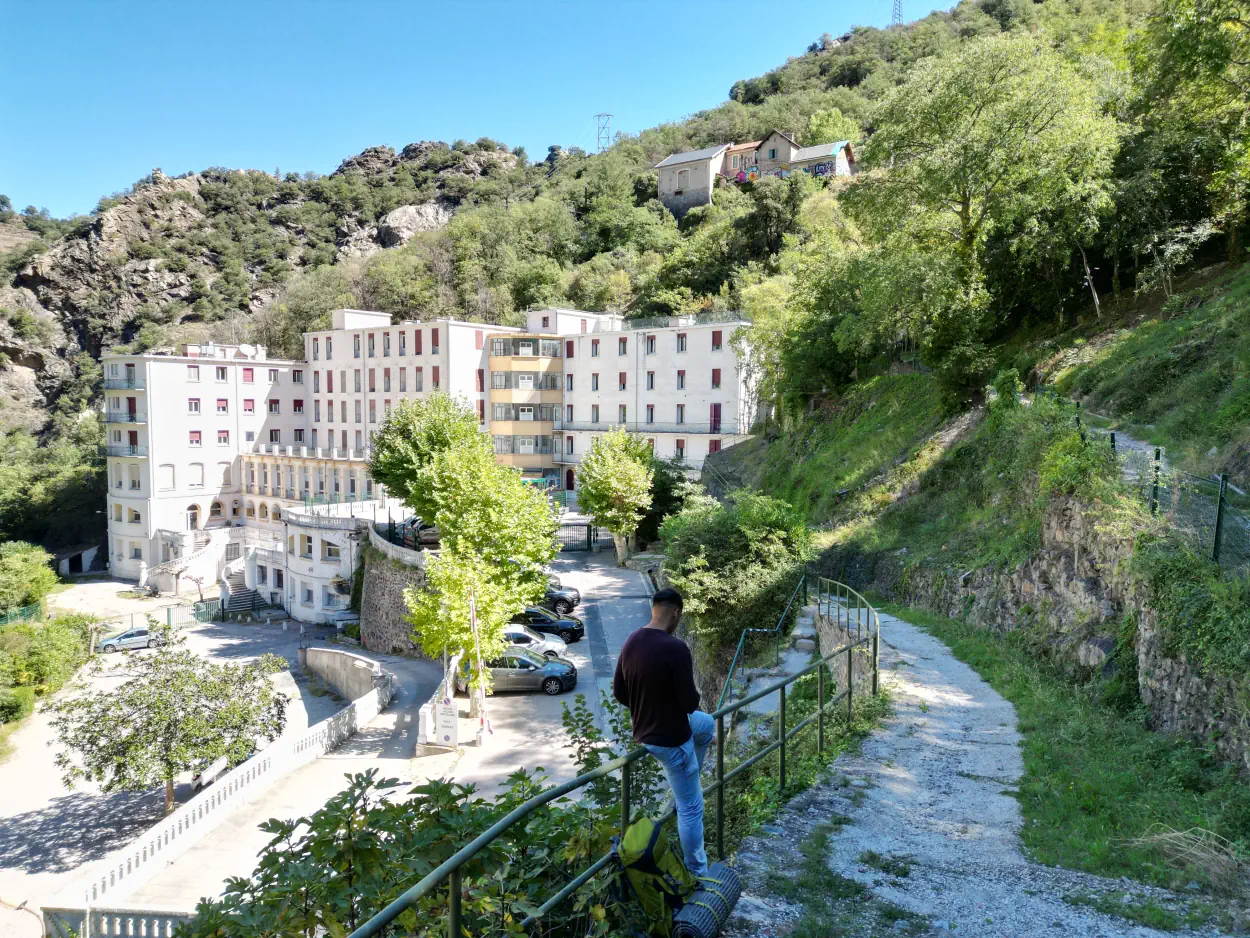
The location of the Little Yellow Train station just above the building was no coincidence.
The hot springs were so popular at the time that the arrival of the railway in 1910 greatly increased the number of visitors.
Thuès even became the ‘capital of arthritics’. In 1833, there were more than thirty hot springs in Thuès-les-Bains. In 1833, there were more than thirty hot springs in Thuès-les-Bains.
3. Bains de Canaveilles - Nyer
The path leading to this spring, known as the Source du Figuier (The Fig tree spring), is located just after the tunnel, on the side of the RN116, where a few cars can be parked. It is almost opposite the D28 road to Canaveilles. It’s about a ten minute walk to the river Têt.
The Bains de Canaveilles are on the other side of the river. They are therefore in the commune of Nyer.
The spring gushes out on the right bank of the Têt, about 60 metres from the exit of the Défilé des Graus (Graus Gorge). The water from the spring flows into pools surrounded by stones and pebbles.
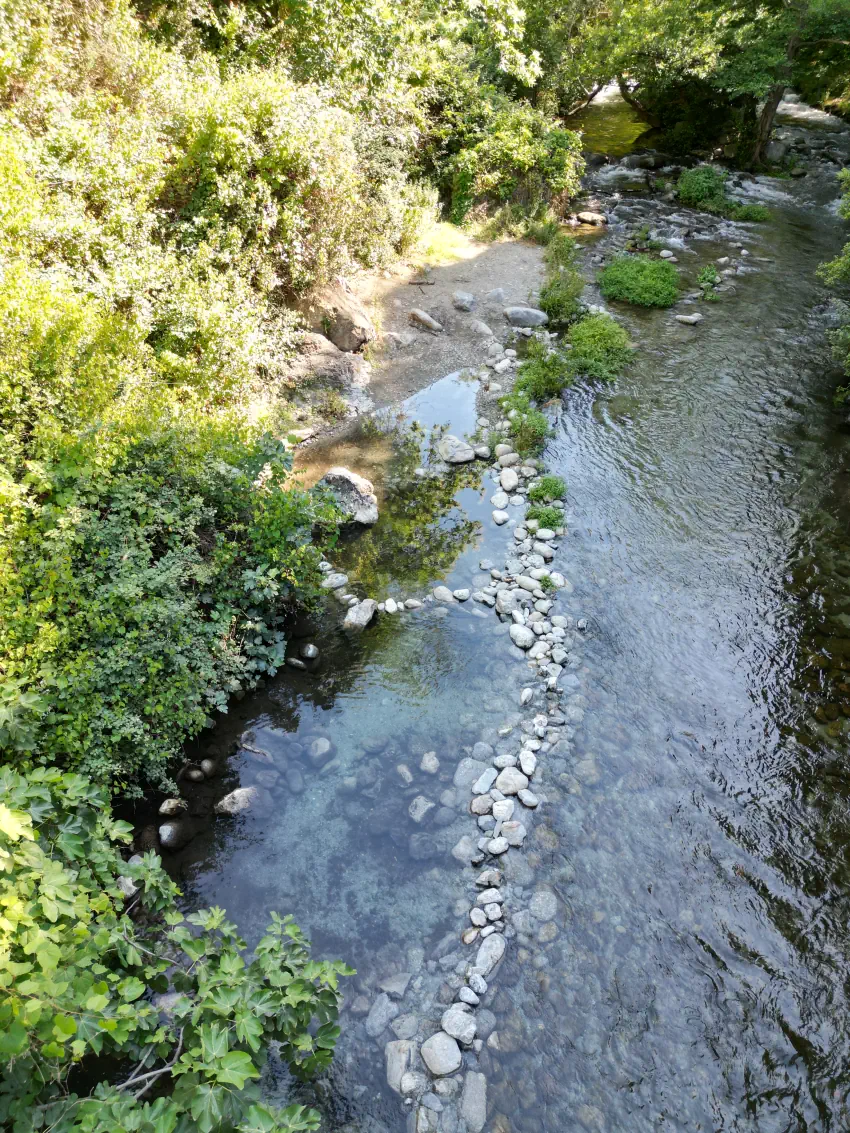
Once I’d crossed the river, I could see that the cold water could seep into the pools and mix with the hot water, preventing burns.
However, the basic layout of the pools prevents any infiltration of fresh water when the level of the Têt is low. But the water could then be too warm.
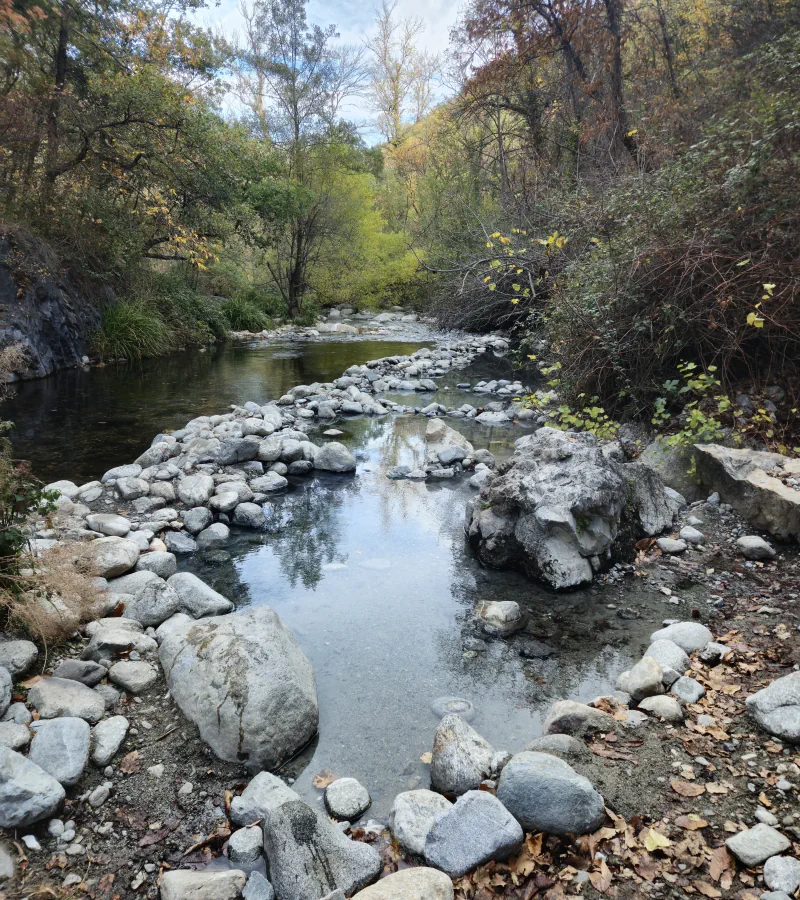
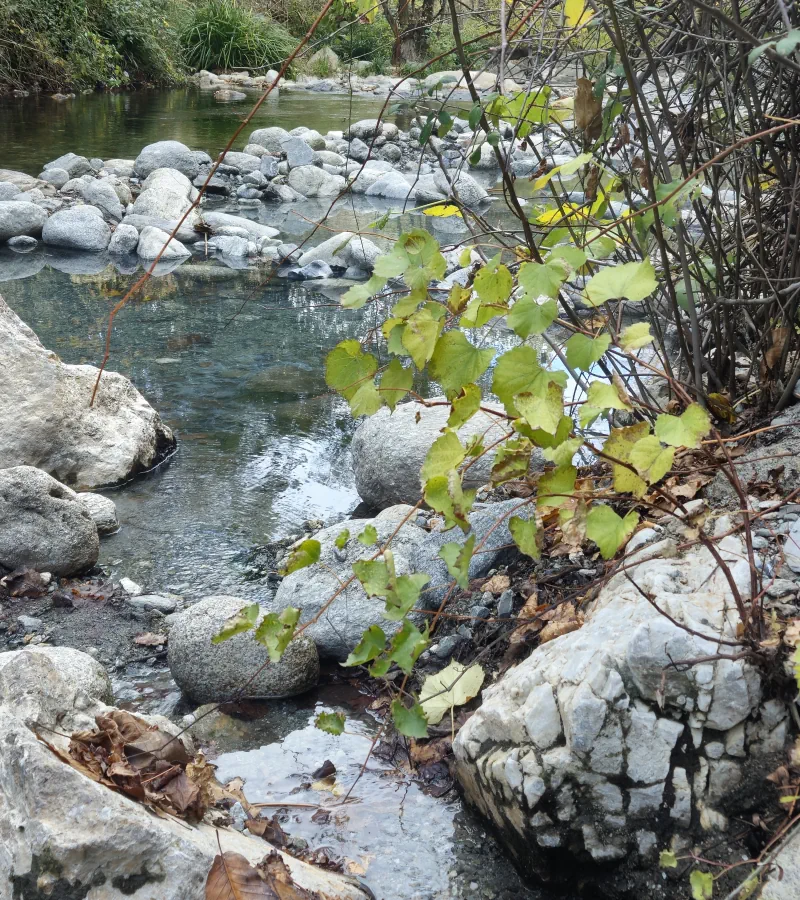
Like the canyon, the water from this thermal spring cannot flow over a large area and cool down naturally. It is quickly diluted by the surrounding water (canyon, river, etc.).
The effect of such dilution on the physico-chemical properties of thermal waters when used in the form of baths must therefore be taken into account.
If you head upriver for about 500 metres, you’ll come to a former spa establishment and hotel, the ‘Relais de l’Infante‘, now in ruins. Located in the steep gorge of the Graus, it is now closed to visitors by municipal decree.
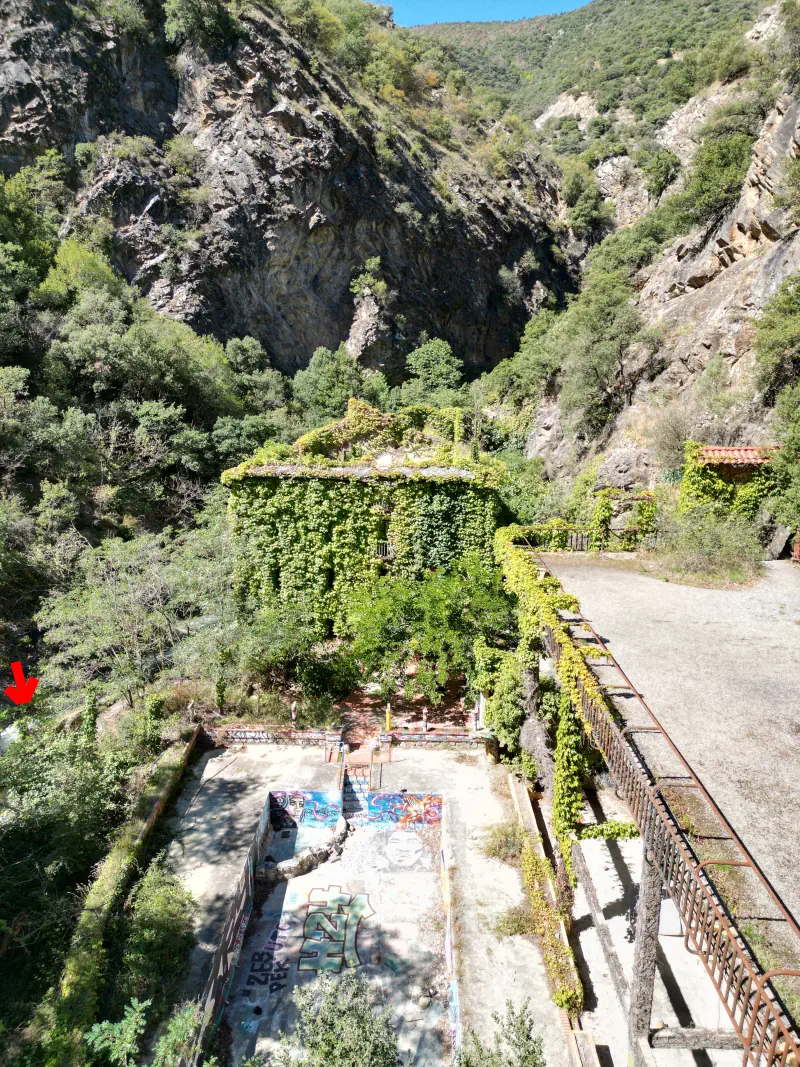
In this area, several springs (six resurgences) gush out on the left bank of the Têt, some of them directly into the riverbed.
This site is a perfect example of the importance of thermal water in the past. The spa resorts had to adapt to the terrain as it existed around the spring. Nevertheless, the water was still transported through pipes before being used.
The most disadvantaged spa resorts were those that developed in narrow valleys. There are many of these in the Pyrenees.
The gorge here is particularly narrow. You can barely see the River Têt as it flows past the disused building. This site was destroyed by a flood in 1876 due to its proximity to the river. There was a building here and its location, exposed to the floods, caused many problems and led to its closure.
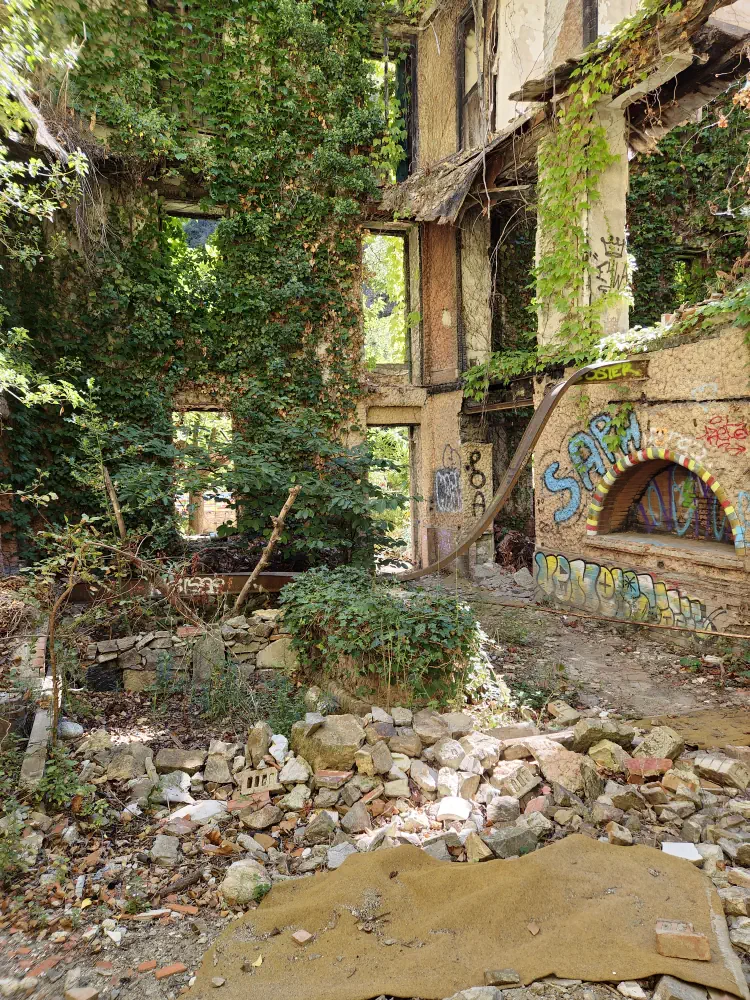
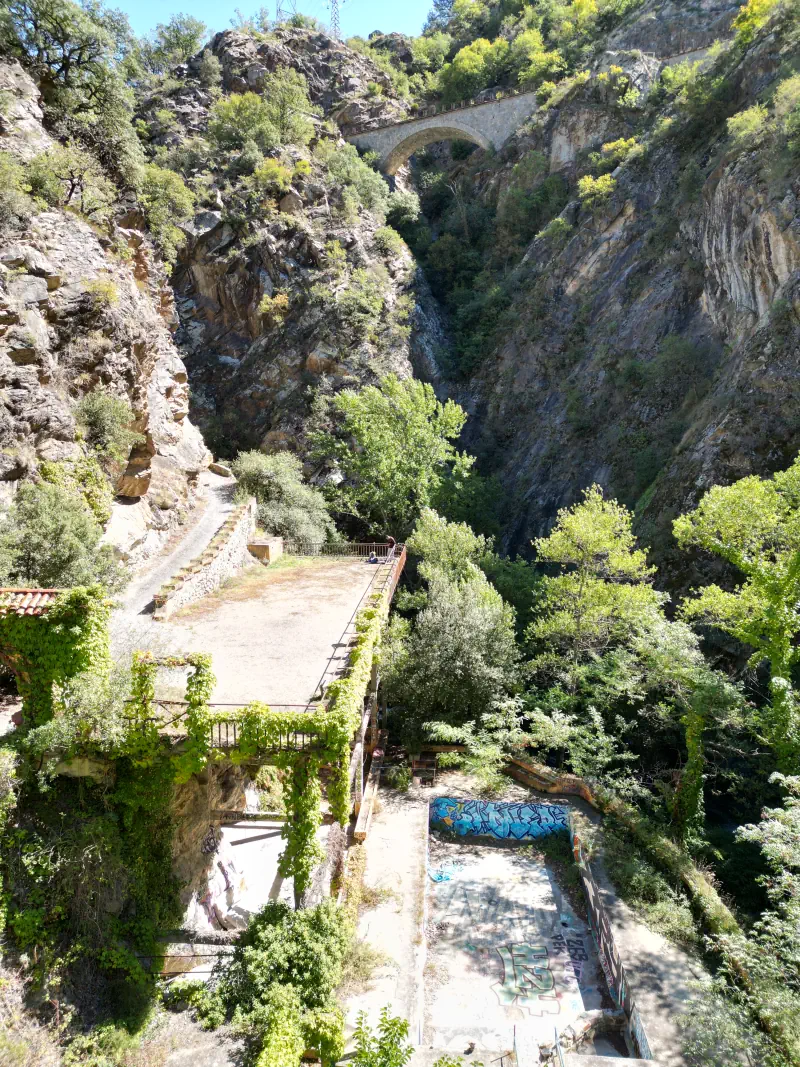
When thermal water gushes into a riverbed, the Romans already knew that the mixture would dilute its invisible virtues. This was the case at Plombières-les-Bains (Vosges, France), where they diverted the river away from the thermal spring, dug up the valley floor and carried out colossal works before erecting their buildings.
Personally, I like to take full advantage of the therapeutic benefits of a thermal bath. In this case, the mixture with non-thermal water means that the temperature in the pool is not perfectly even. Hot water, which is lighter than cold water, remains on the surface, which can sometimes be uncomfortable. Cold water, which is heavier, remains at the bottom and encourages you to move around to stir the water.
The Bains de Canaveilles is also a site that requires a river crossing, which can be tricky at times of high water.
In addition, the Têt is narrower at the Relais de l’Infante and the warm water resurgences mix more with the cold water.
If you’re looking for peace and solitude, this is the place for you. Do not visit after a thunderstorm or heavy rain.
4. The hot springs of Prats-Balaguer
This is the most spectacular of the hot springs and access is completely harmless. However, it is a twenty minute walk from the trailhead.
This is one of the few hot springs in France where you can enjoy a real natural bath. It has none of the drawbacks of other hot springs. The thermal water is not diluted by surface water, it flows over natural ground, it cools naturally, it does not stagnate, etc.
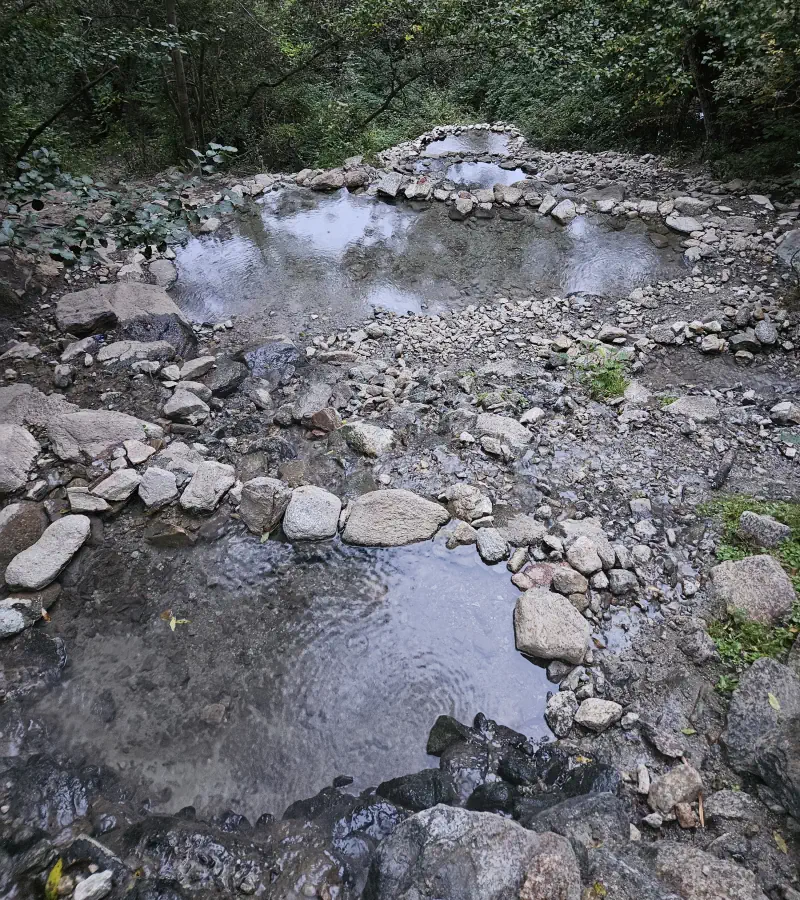
The thermal water, which bubbles up at a temperature of 69 degrees, flows into a series of pools where you can relax and enjoy its many benefits.
To find out more about this hot spring, I invite you to read the article ‘ The hot springs to visit in Prats-Balaguer ’.
5. Bains de Dorres - Dorres
As soon as I arrived, my enthusiasm was at its peak. I wandered around, looking at the landscape, circling the pools, always looking forward to a moment of relaxation. It’s true that the baths are perfectly located, at an altitude of 1,500 metres, in a green setting where everything seems perfect for a rejuvenating break.
The site is not harsh in itself, as it receives a good dose of light, which forges the character and properties of these sulphurous waters.
The Bains de Dorres are set in a vast lawned area with stunning views of the mountains. Stone pools, inspired by Roman baths, provide hot water and can accommodate several bathers at once.
The Dorres baths are a real health centre, far from any residential area. Many visitors therefore welcome the preservation of a site which, before 1991, was known for its wild baths. The site, which belongs to the town, was developed near the griffon, which is located in a small, modest artesian well.
The installation of the baths is very simple: there is no reservoir (which would affect the quality of the water) and the water is not chemically treated. The water comes out of the spring at a temperature of 42 degrees and is kept at an ideal temperature in each pool without the need for any physical treatment such as a heat exchanger or chiller. The water therefore retains its properties to a certain extent.
The pools are made from unglazed natural stones of granite. The roughness of the material is less easy to rinse than a smooth surface, but it gives the pool a more natural feel.
There are also two single baths against a wall, so you can enjoy the thermal water in a special atmosphere.
Each pool and tub is fed independently from the same sulphurous spring and the water is constantly renewed. The baths are therefore ‘running water‘.
The daily rate is €6 per adult. There’s also a refreshment bar at reception serving drinks and ice creams at reasonable prices.
6. The Reynes hot water washhouse
The water from this spring gushes out naturally from the rock that forms an integral part of the wash-house. In other words, the bath is taken as close to the source as possible.
The overflow from the washhouse flows through a canal into a stream with an unintelligible name: Correc de Can Guillet.
At any given moment, a large amount of water is coming out of the wash-house, showing just how big the flow is. In the past, washerwomen used to rinse their clothes in this water, which had so many virtues.
An old man who came to wash his clothes that day told me about the benefits.
This spring, which he has visited regularly for over six decades, has always maintained a constant temperature. According to him, it is very effective in relieving rheumatism and skin problems and helps wounds to heal quickly.
This washhouse is now used for bathing. With a temperature of 28 degrees, this spring is pleasant in hot weather.
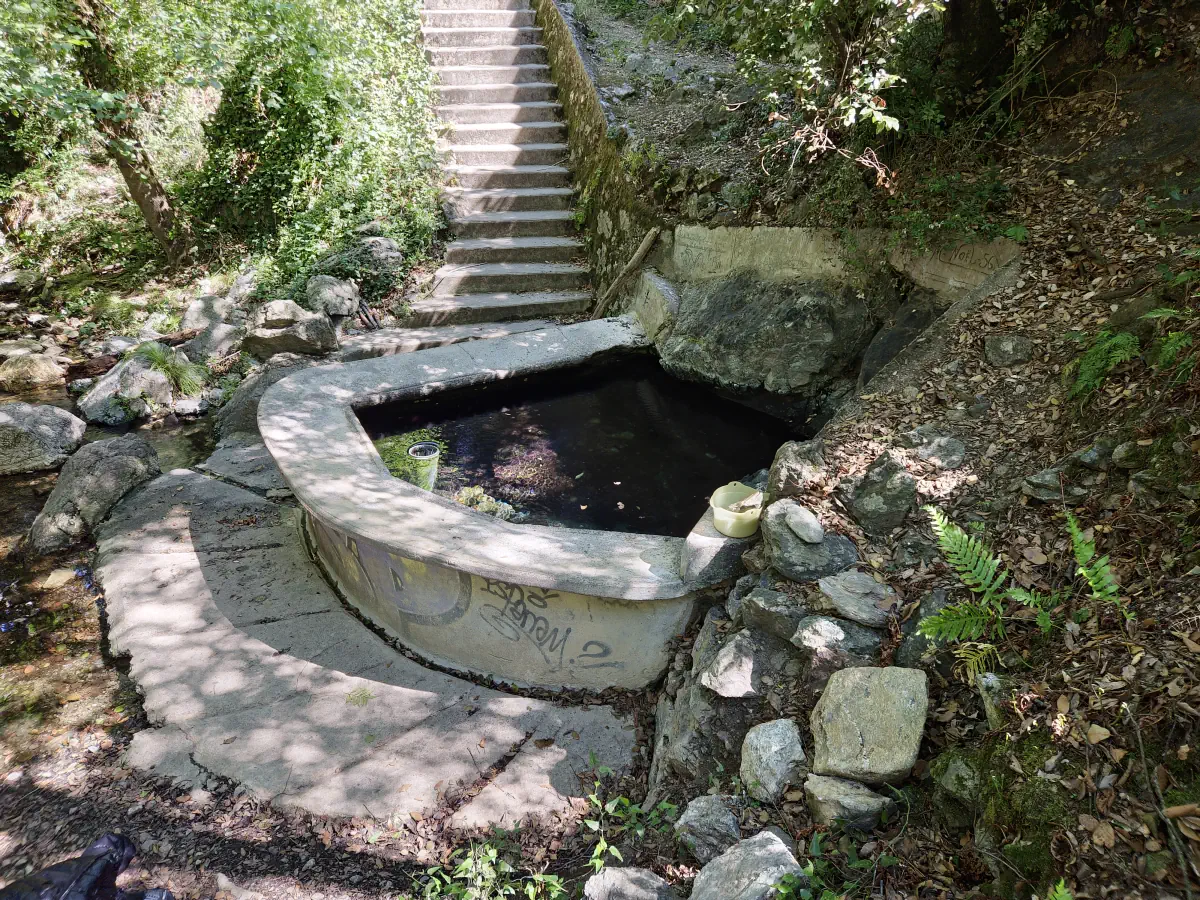
7. Source du Monjolet - Amélie-les-Bains
A water for drinking? The Monjolet spring provides it, although it is mainly used to treat skin lesions. Used externally, it is said to have wonderful effects on certain skin conditions such as eczema, psoriasis and acne.
The spring rises about a hundred metres from the thermal baths, in the forest behind the village of Amélie-les-Bains. Discovered in 1756, its low flow rate (2 litres per minute) meant that it could have quickly become extinct. More than two centuries after its discovery, the spring still flows.
Its strong sulphurous smell probably helped to make it an attraction to be honoured. It was therefore necessary to build a shelter for it. Its sulphur smell is very strong and, according to a local resident, it is ‘the best in the village’. Personally, I’ve never smelled anything like it in the Pyrenees.
When I arrived at the site, I discovered first the shelter and then the fountain. The water is collected in a shallow rectangular trough. The water still flows slowly and its temperature was 36 degrees at the time of my visit. I also noticed a large amount of glairin, a whitish substance, in the water.
The fountain has a niche protected by bars, which looks strangely like an oratory. In the 18th century, pilgrimages to the fountains were very popular.
Nature of the waters
The high temperature of the water and its remarkable effectiveness during a bath make it a useful remedy, regardless of its mineral composition. To find out more, read the article: The amazing health benefits of a hot bath.
All these natural waters are classified as sodium sulphide. You’ll probably smell something like rotten eggs as you approach the spring. But rest assured, it is this gas (hydrogen sulphide) that gives the water its special properties. Known for its healing properties, sulphurous water is used to treat rheumatism, skin diseases, respiratory diseases, intestinal problems, etc. To find out more about this gas with healing powers, I invite you to read the article ‘ How to cleanse your lungs with simple, natural ways ’.
They also contain small amounts of sulphur in the form of sulphate (often less than 50 mg/l).
However, contrary to conventional wisdom, they are not highly mineralised. Sodium ions predominate and are present in significant quantities (around 50 mg/l). They also lack chemical elements such as calcium, magnesium and potassium, with concentrations often below 10 mg/l. However, alkalinity remains the dominant characteristic of these waters (pH between 8.5 and 9).
They contain significant amounts of fluorine in ionic form (5 to 8 mg/l). This is one of the characteristics of the Pyrenees, where many springs are naturally rich in fluorine. However, fluorine has a bad reputation with some people and a good reputation with others. In reality, its toxicity and potential benefits vary according to the context.
This characteristic is also found in the thermal springs of the Mercantour-Argentera massif in Italy, particularly in the Bagni di Vinadio spring, where the fluorine concentration is almost 5 mg/l. To find out more about this hot spring, I suggest you read the article ‘Terme di Vinadio – Hot springs to visit in Piedmont’.
These Pyrenean springs contain interesting trace elements (in μg/l) such as boron, barium, lithium, zinc, silica and strontium.
Finally, whatever the temperature, these waters contain a whitish mucilaginous substance. This filamentous substance, called glairin, is produced by bacteria and seems to have a number of properties: antibiotic, anti-inflammatory, anti-allergic and healing.
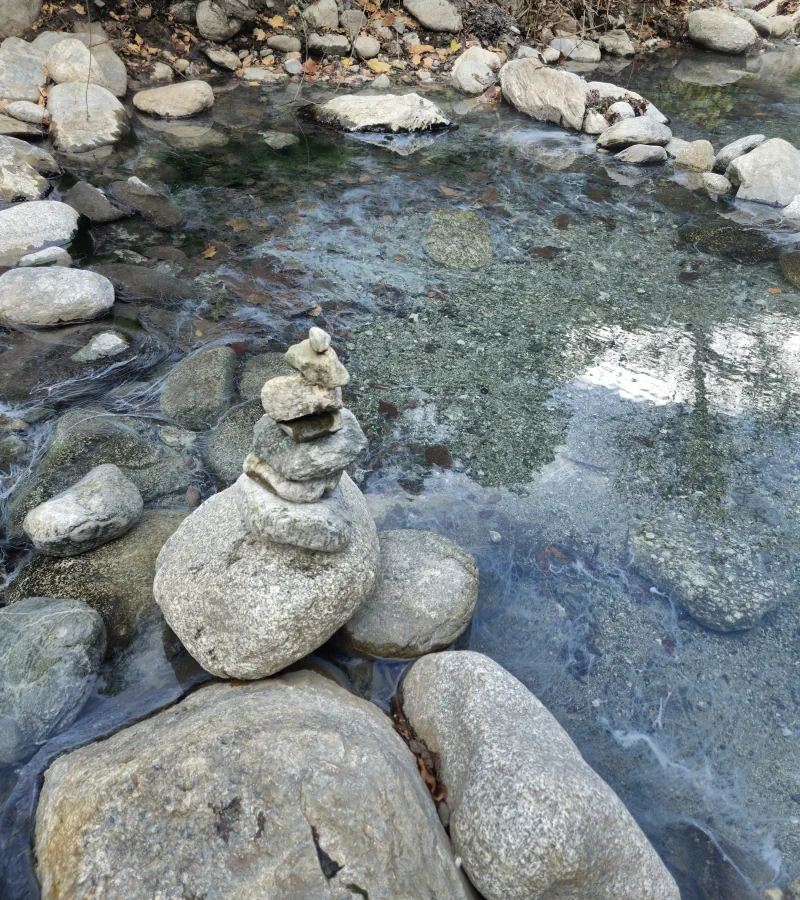
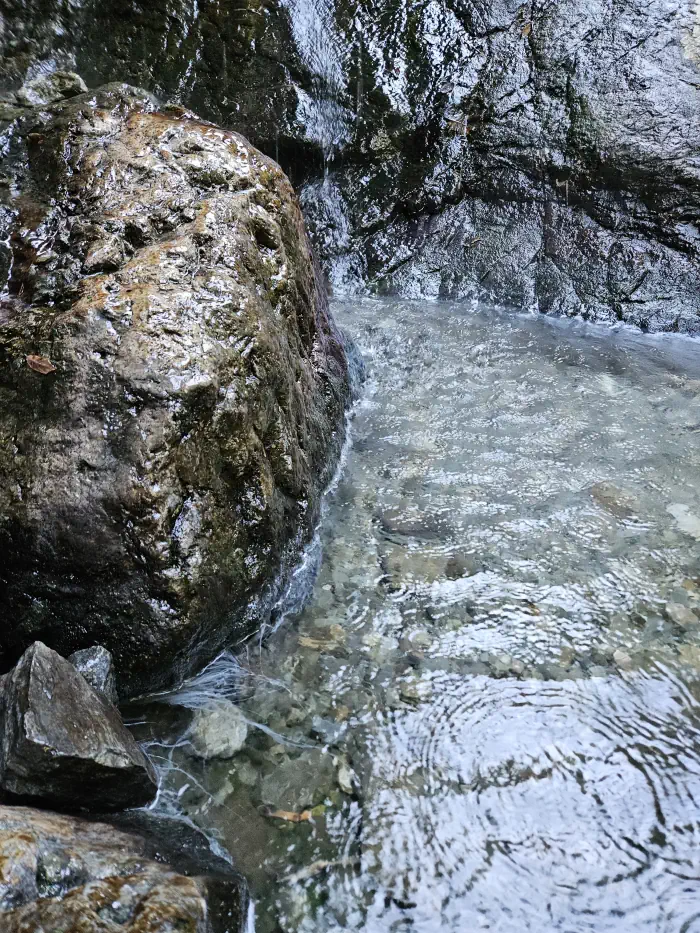
In the Pyrenees, this nitrogenous substance is also known as ‘baregin’ (in reference to the spa town of Barèges) and gives these natural sulphurous waters all their creaminess.
It settles to the bottom of the pool in the form of a colourless jelly. The attentive bather will notice a certain resemblance between this limpid mass and the vitreous body of the eye.
Without these white filaments, it would be almost impossible to spot some of the sulphurous hot springs that bubble up in places in the riverbed. Nature is sending us a clear message: I’m here!


